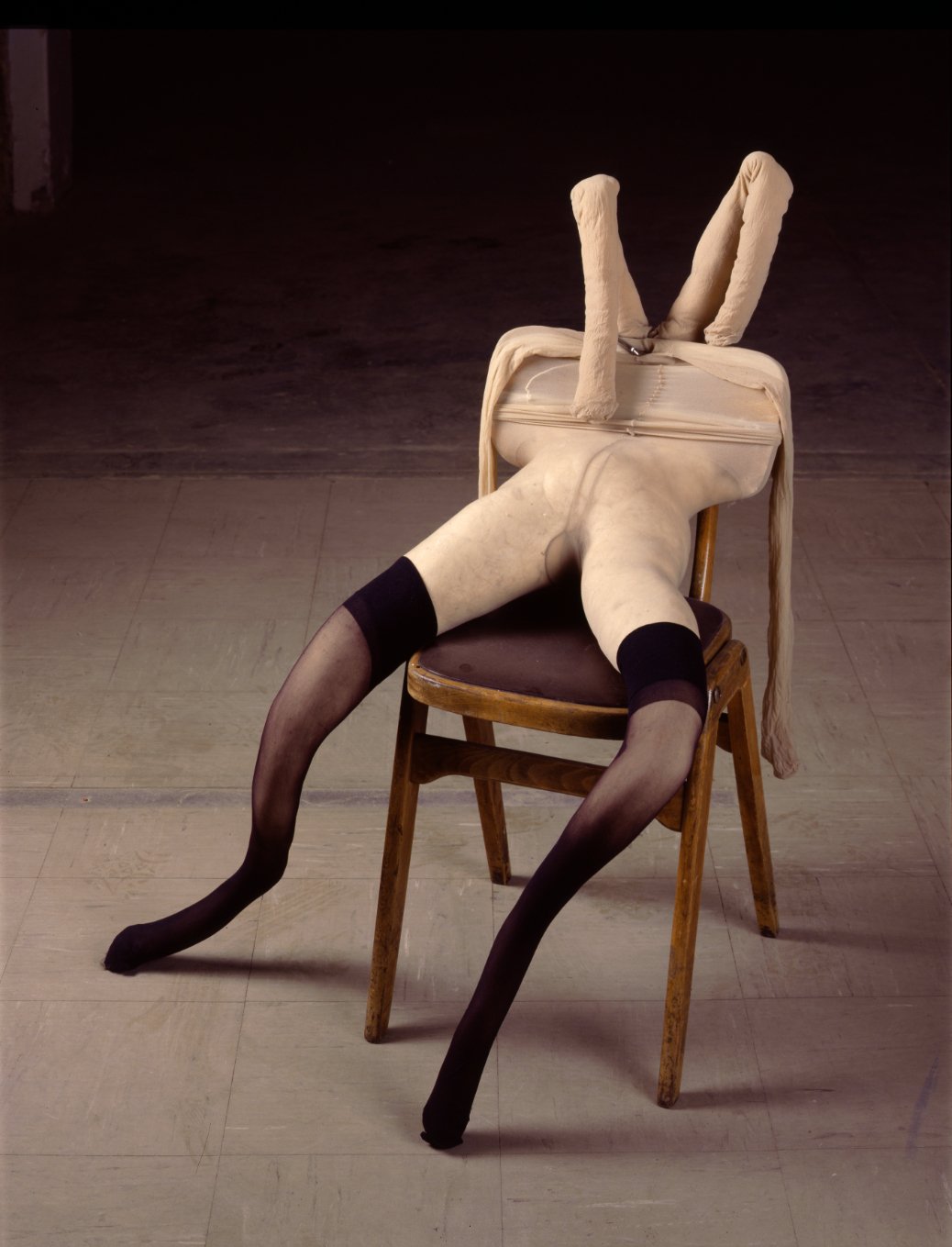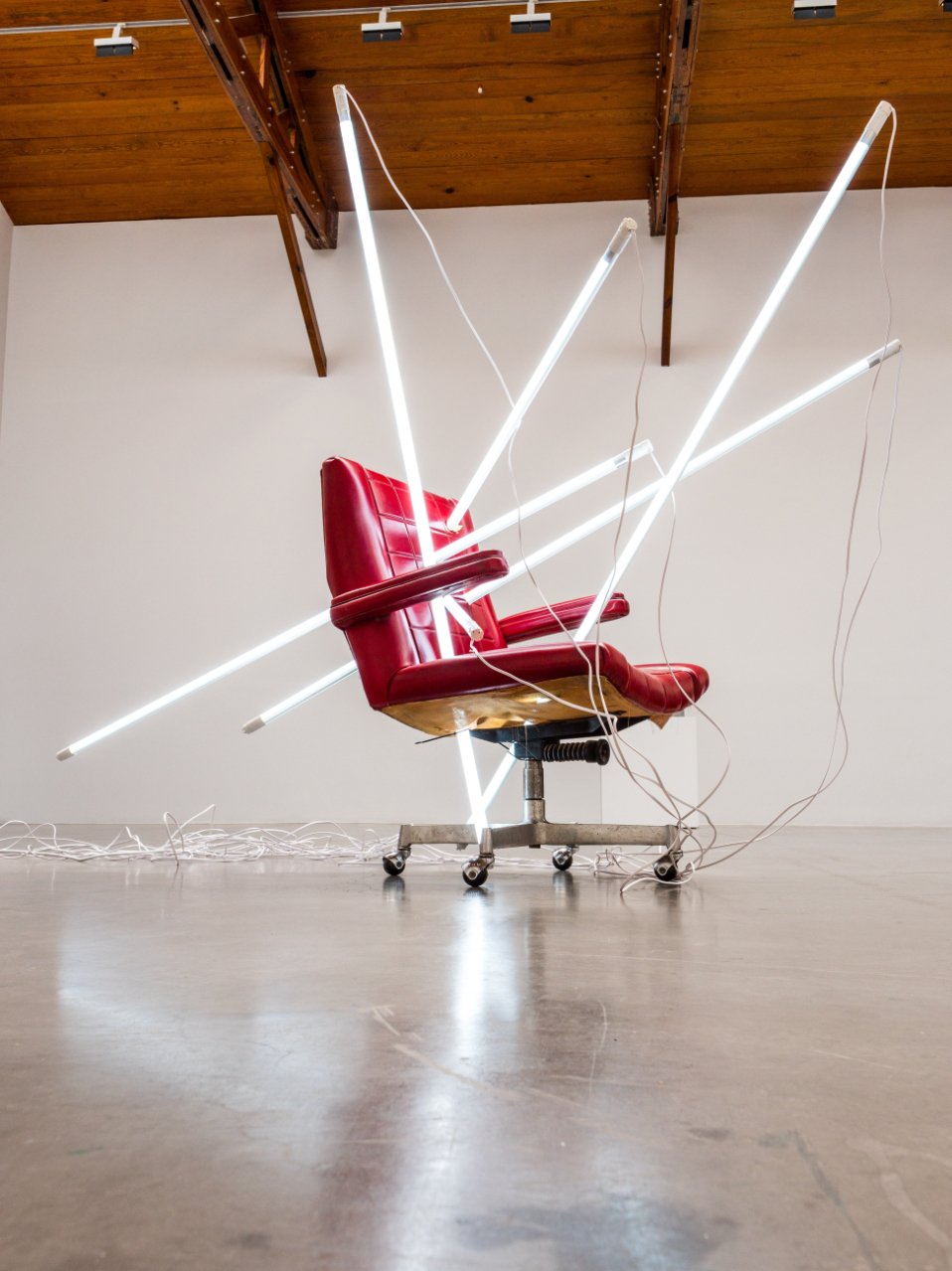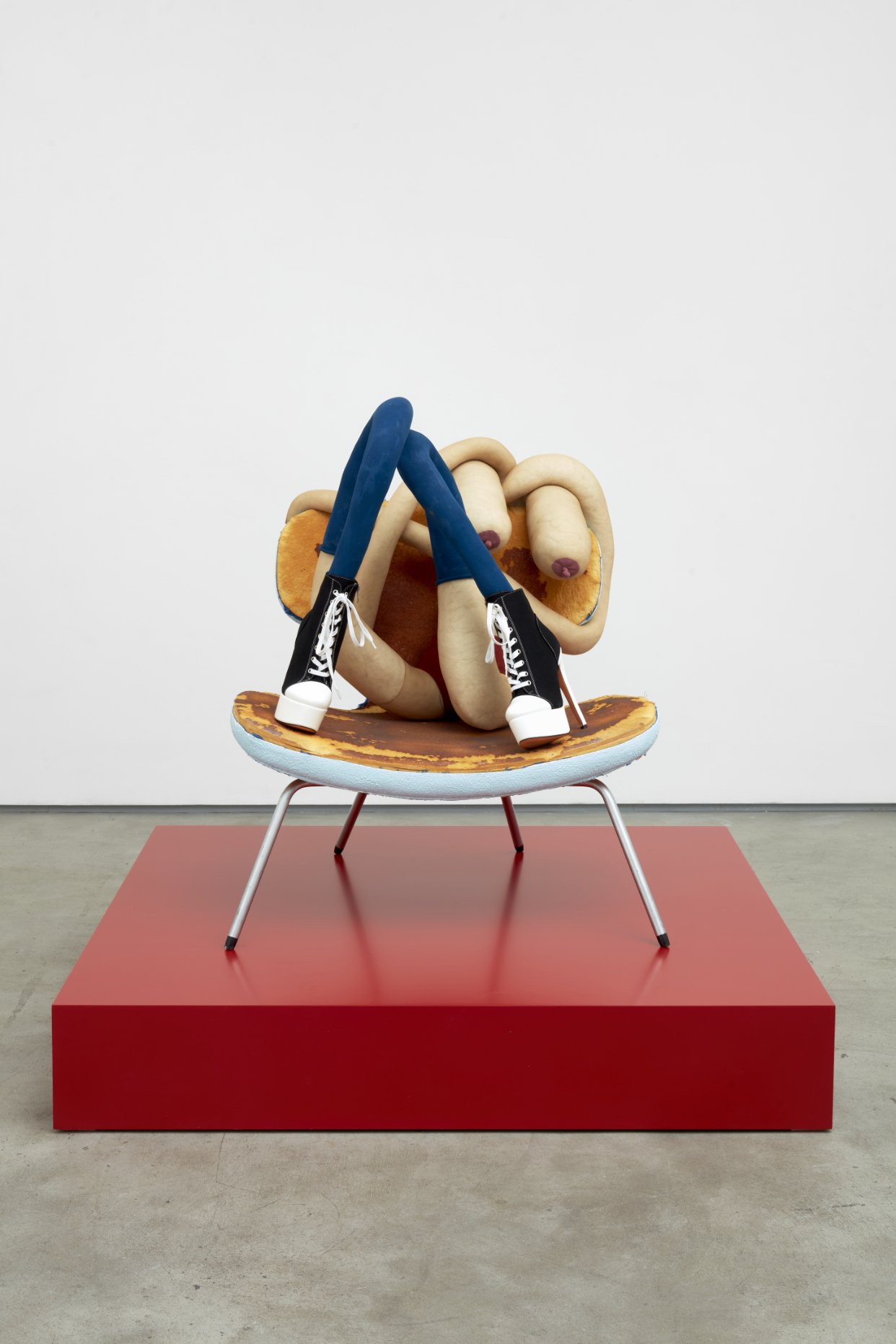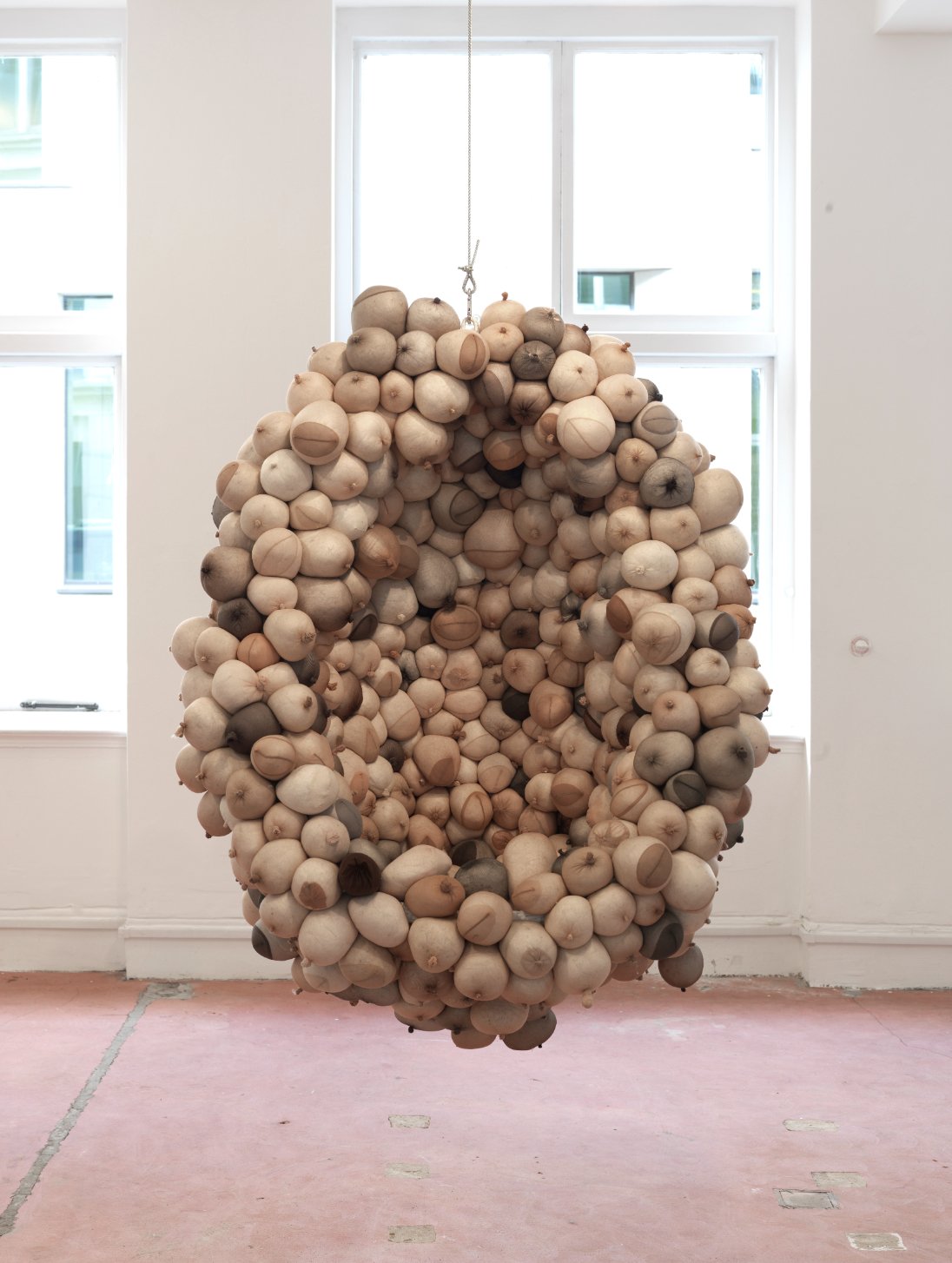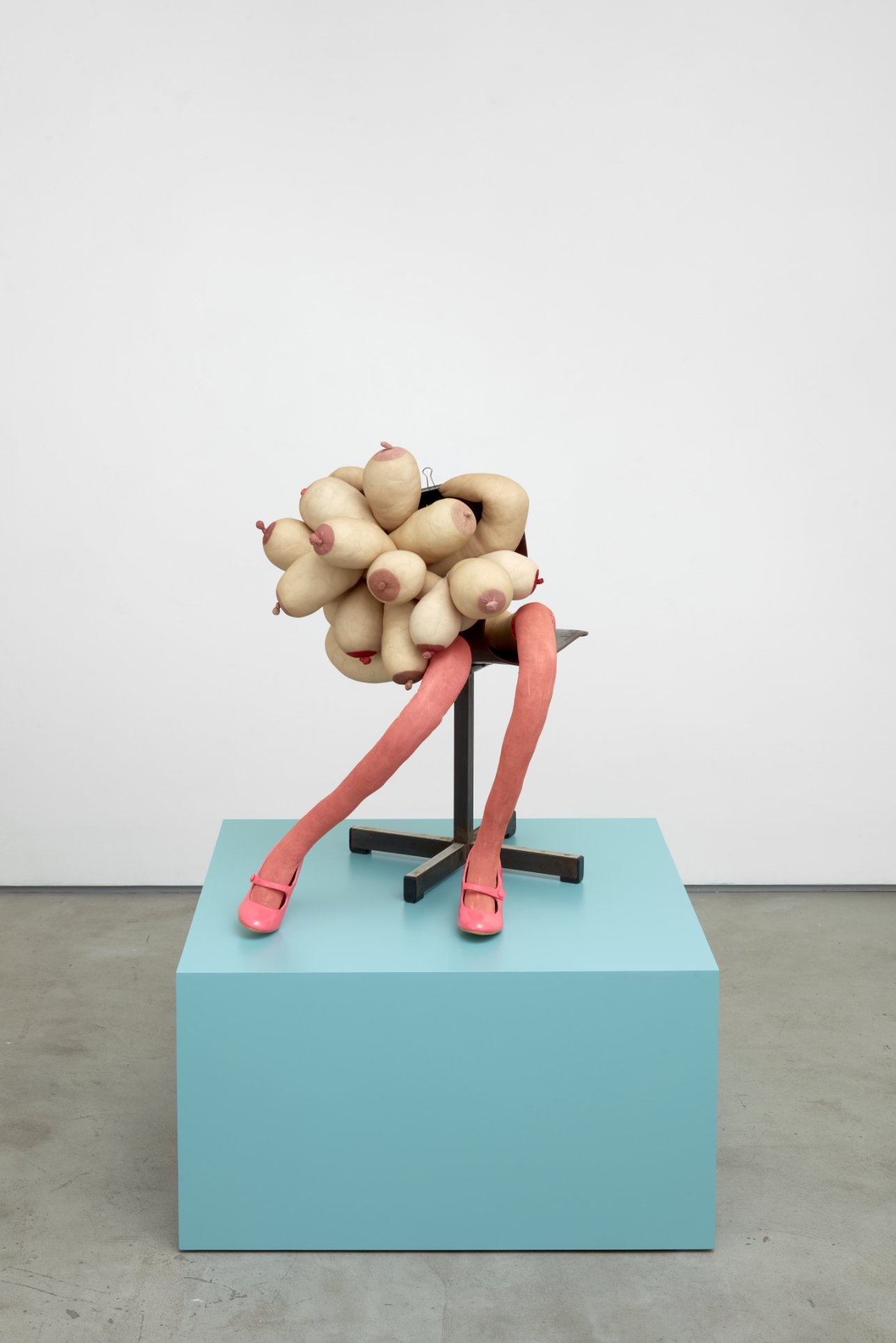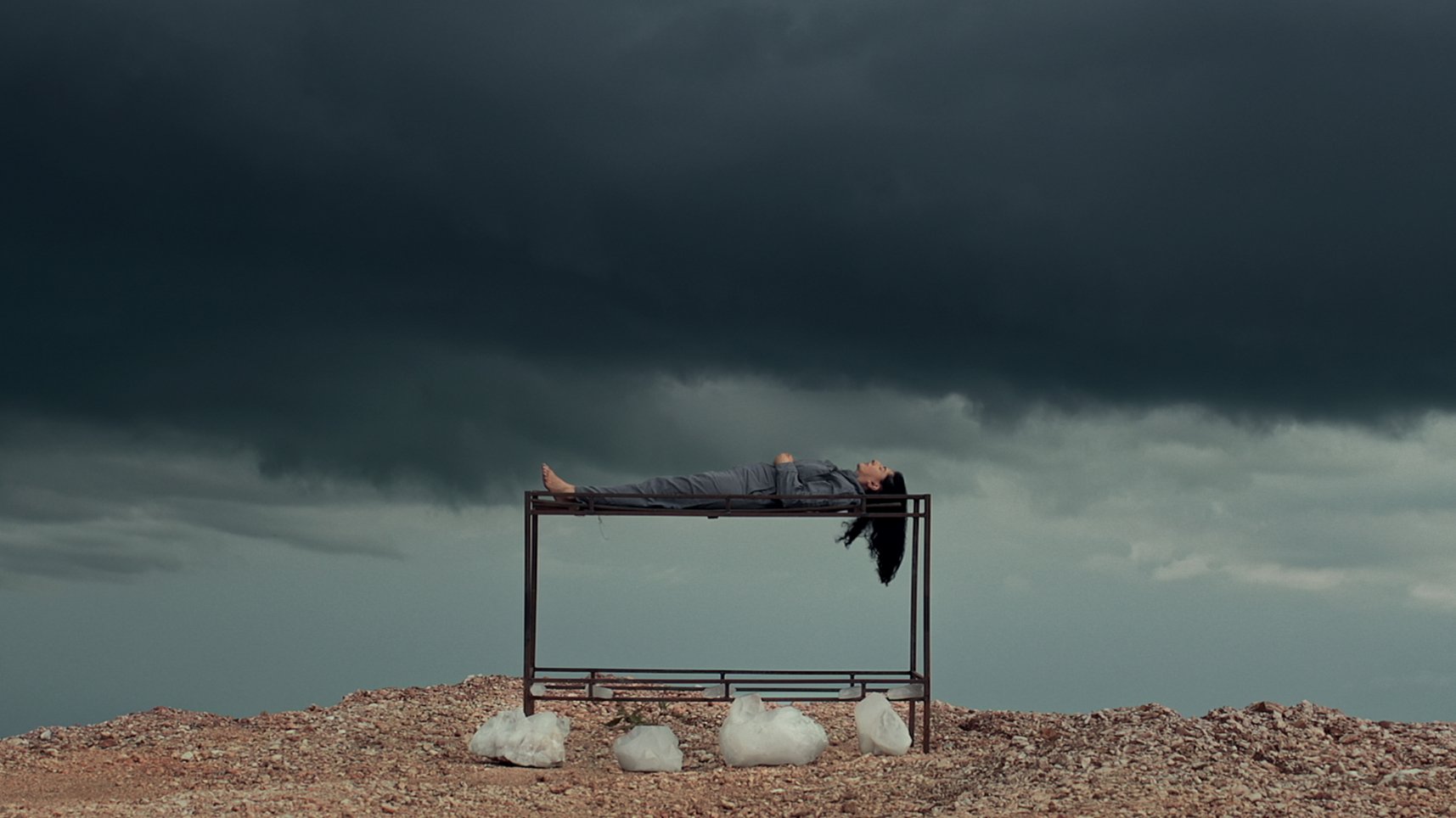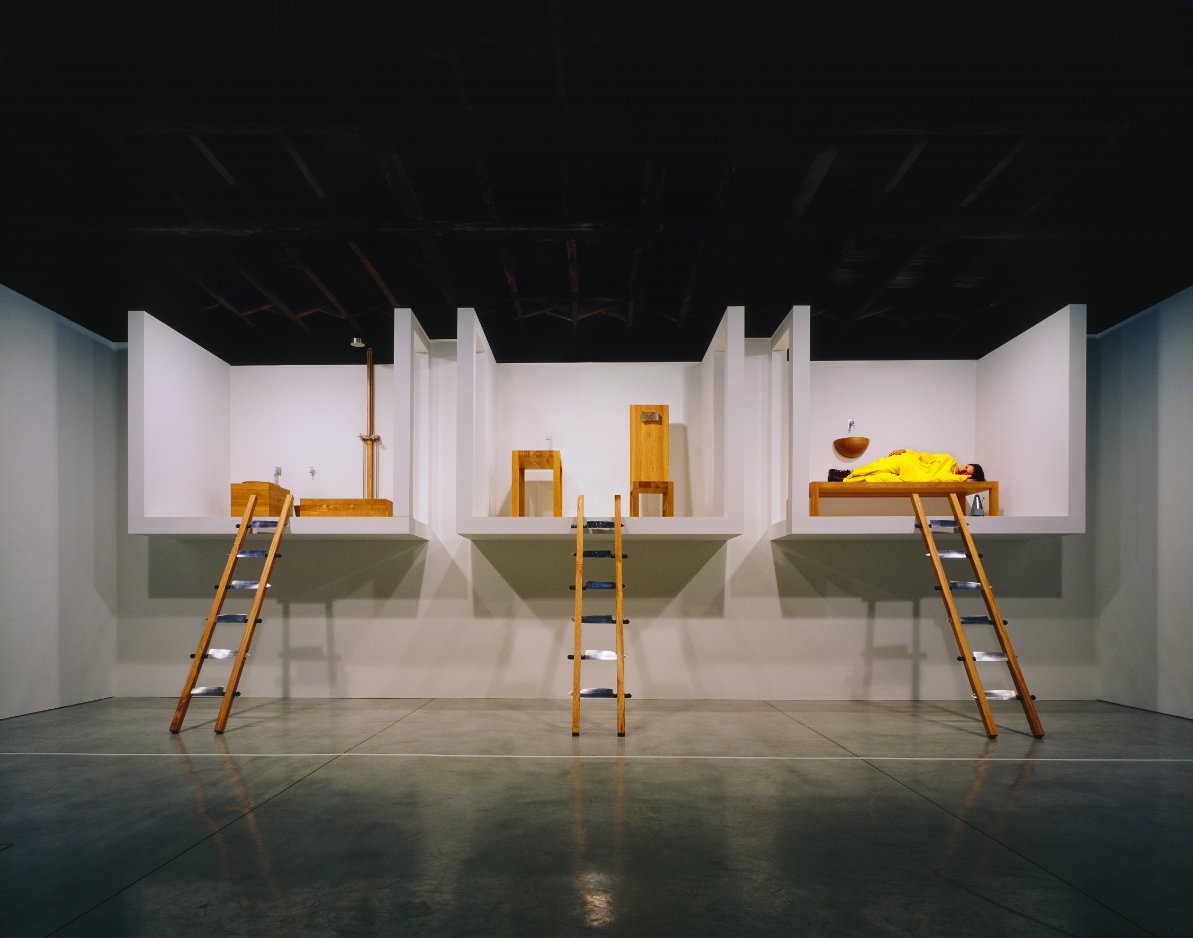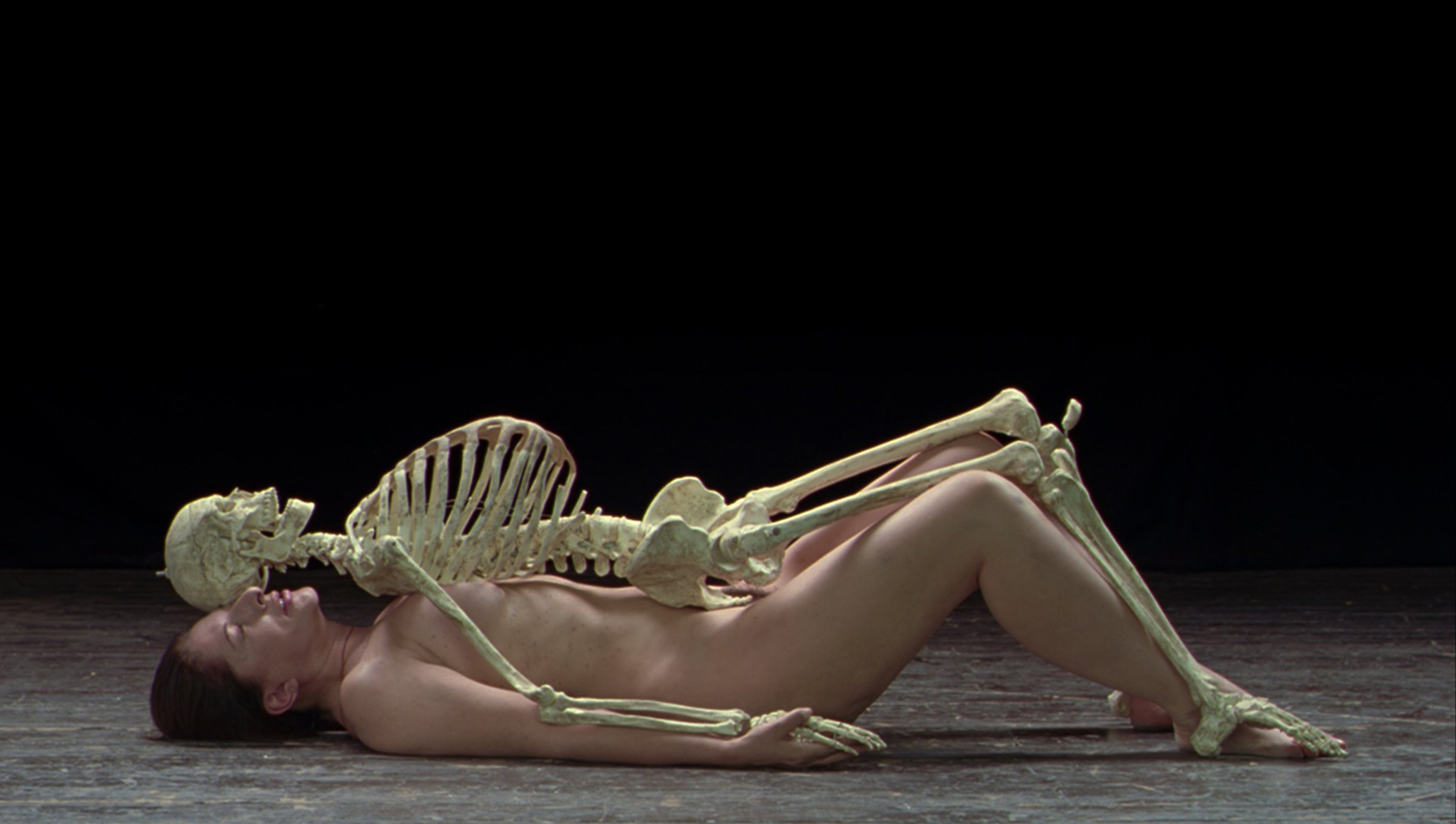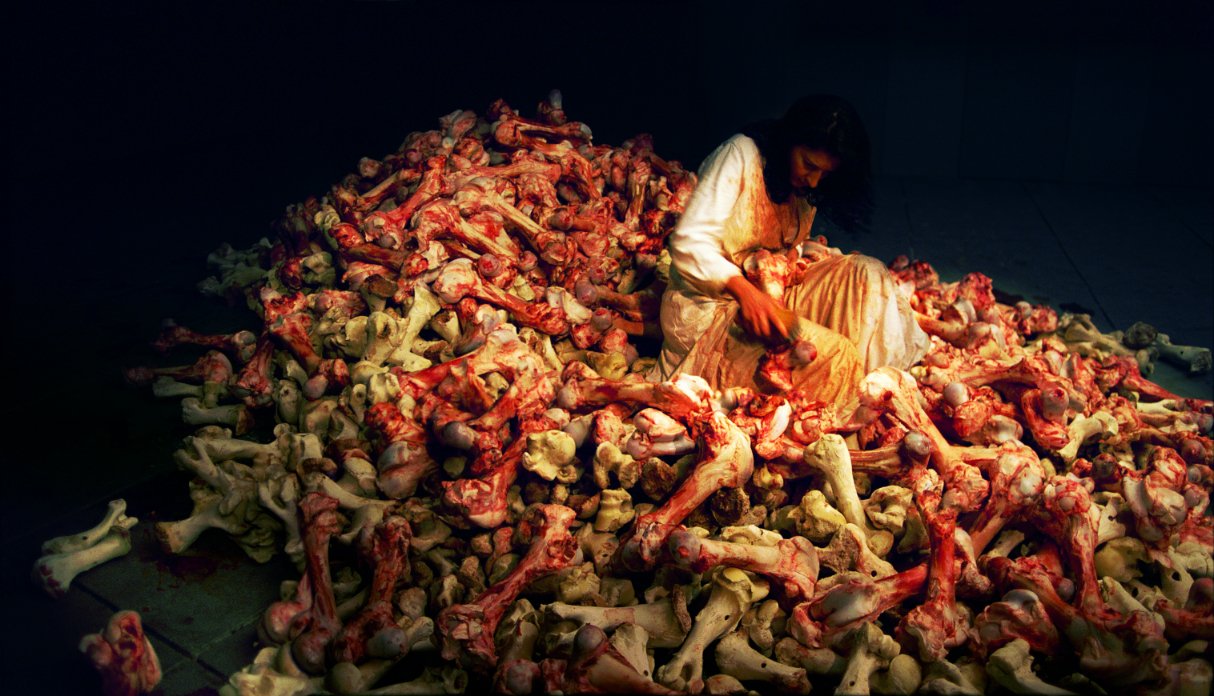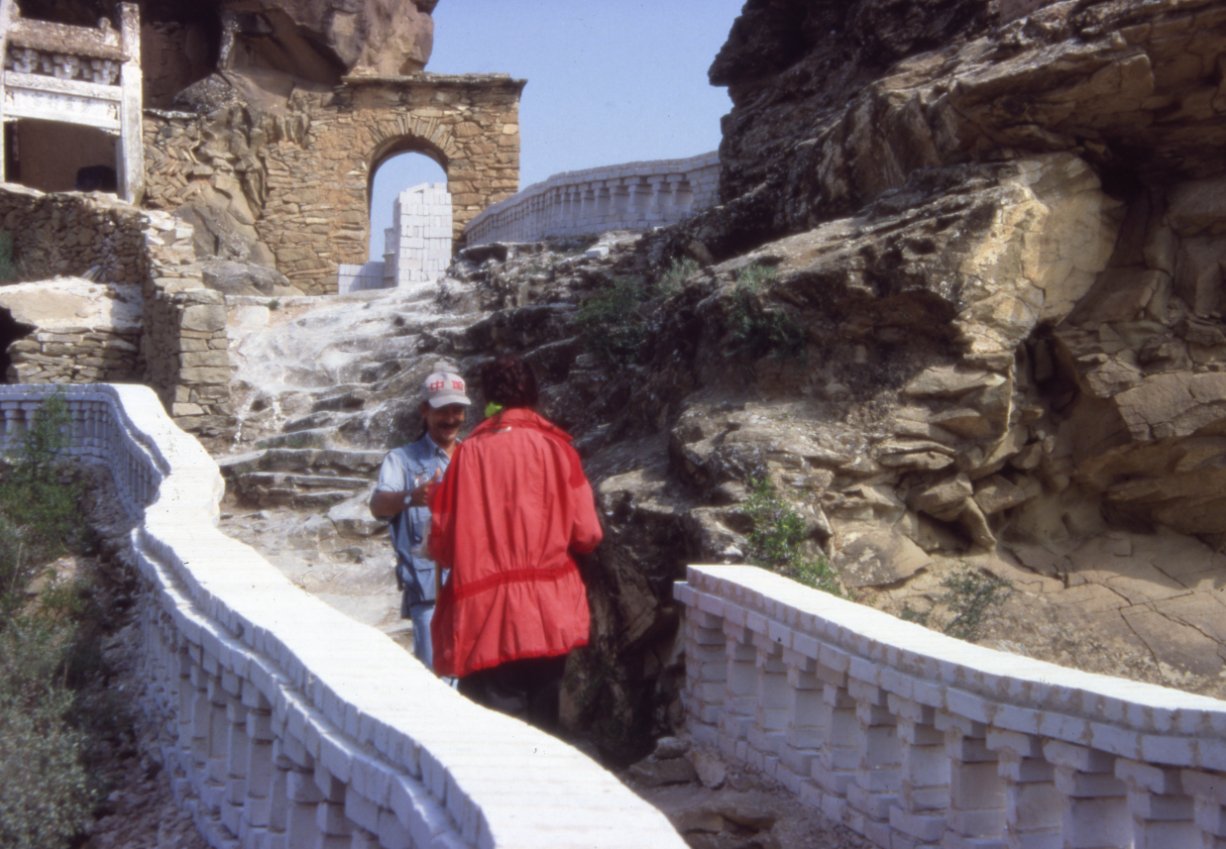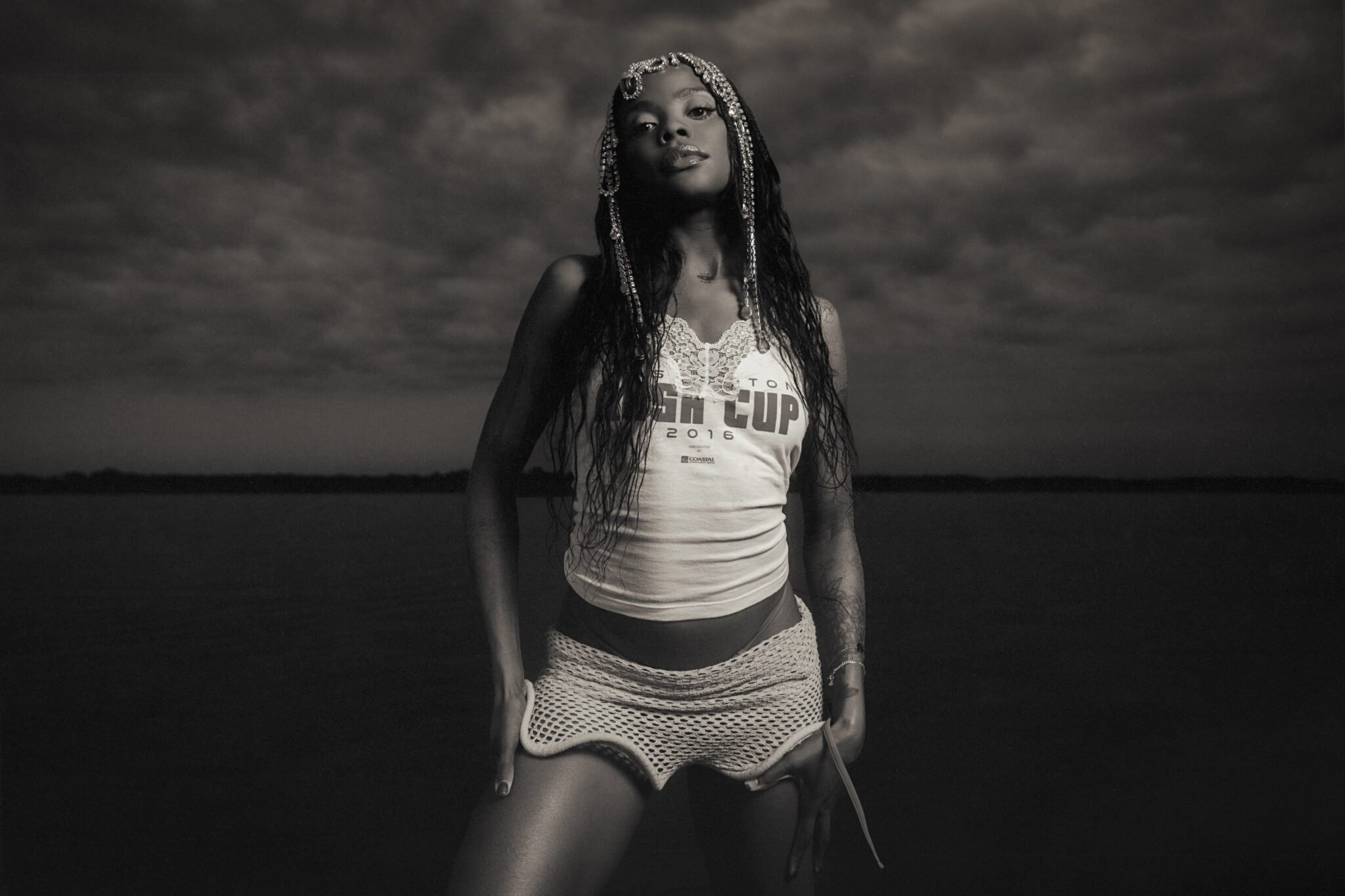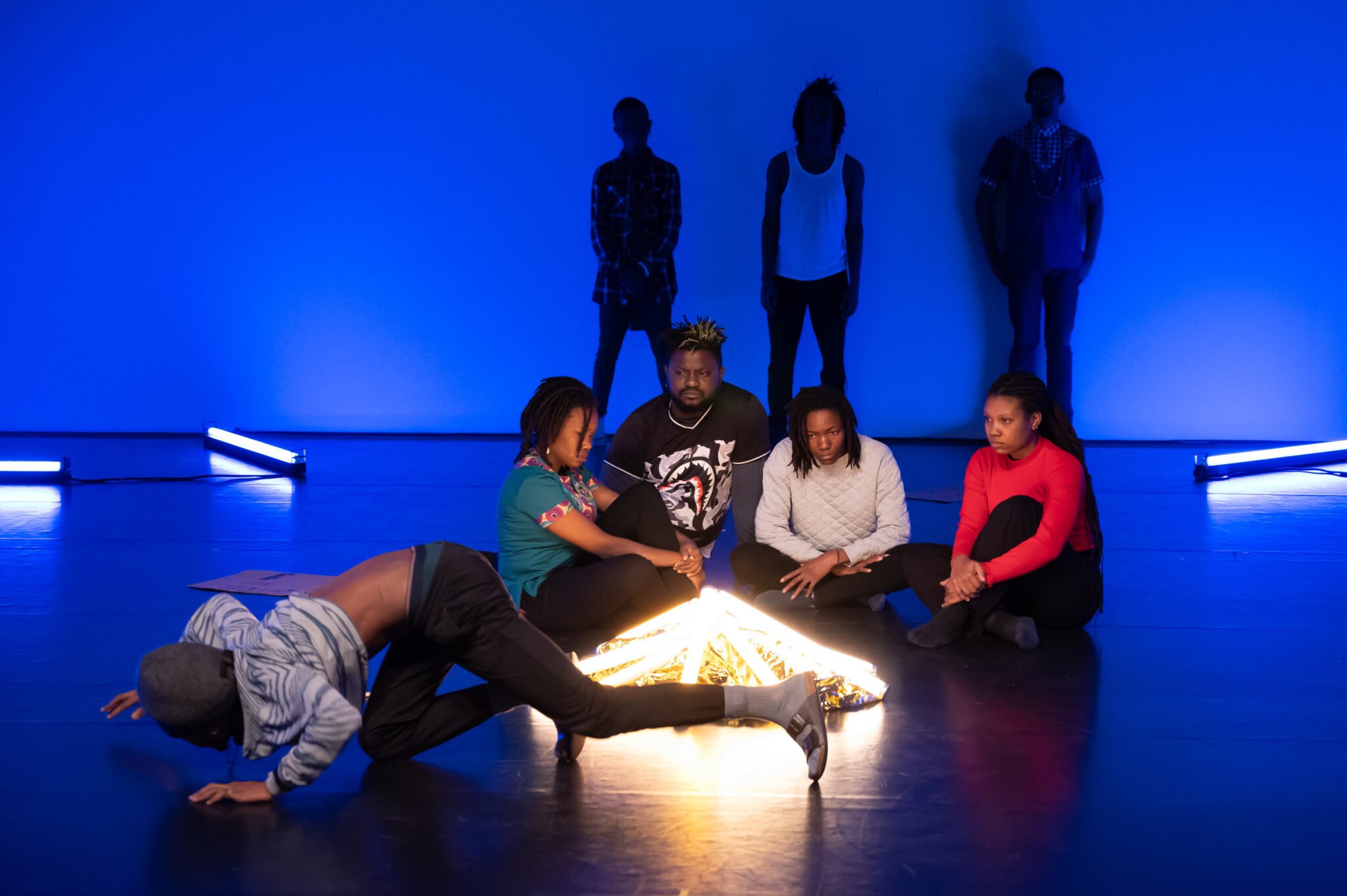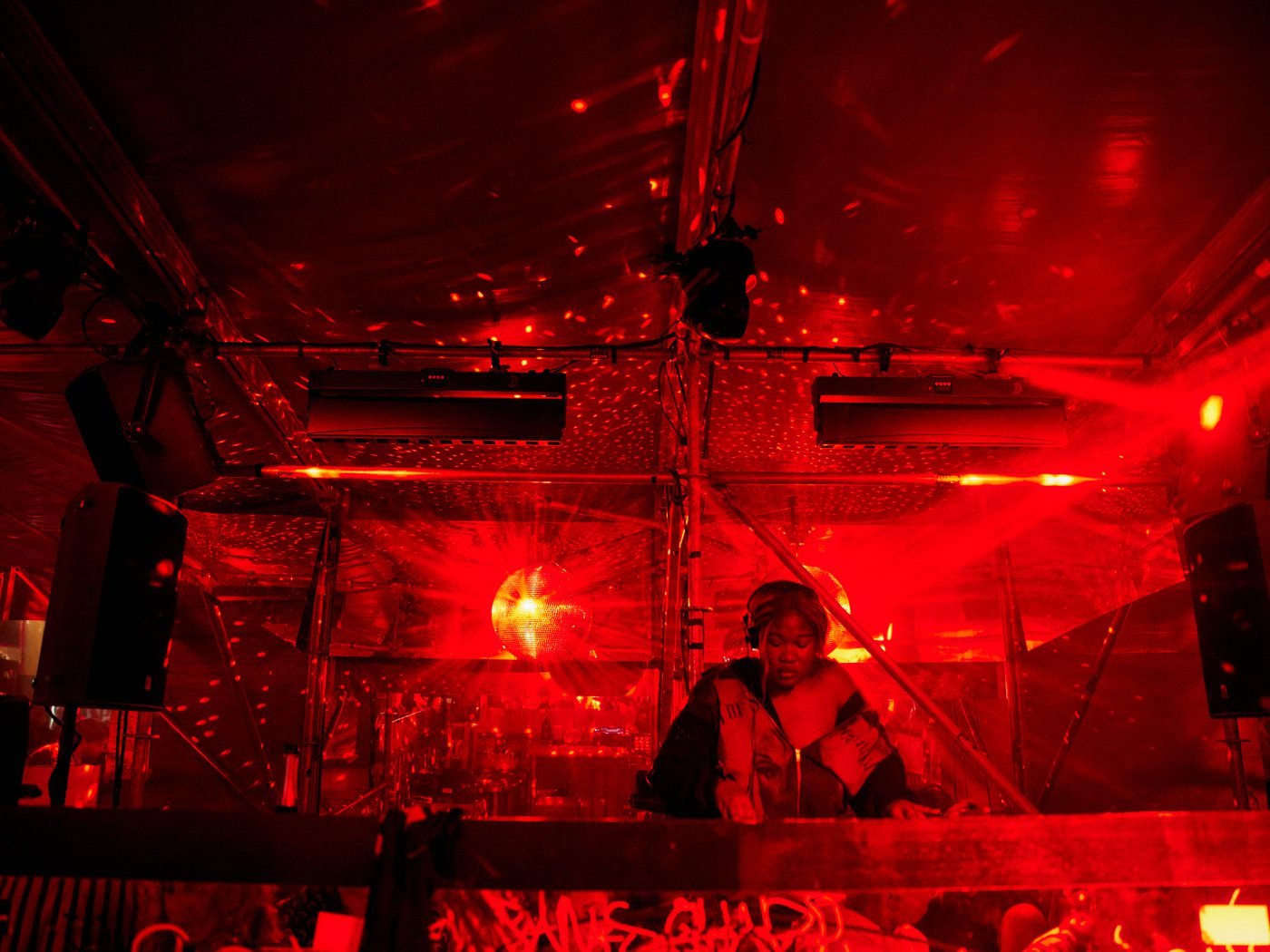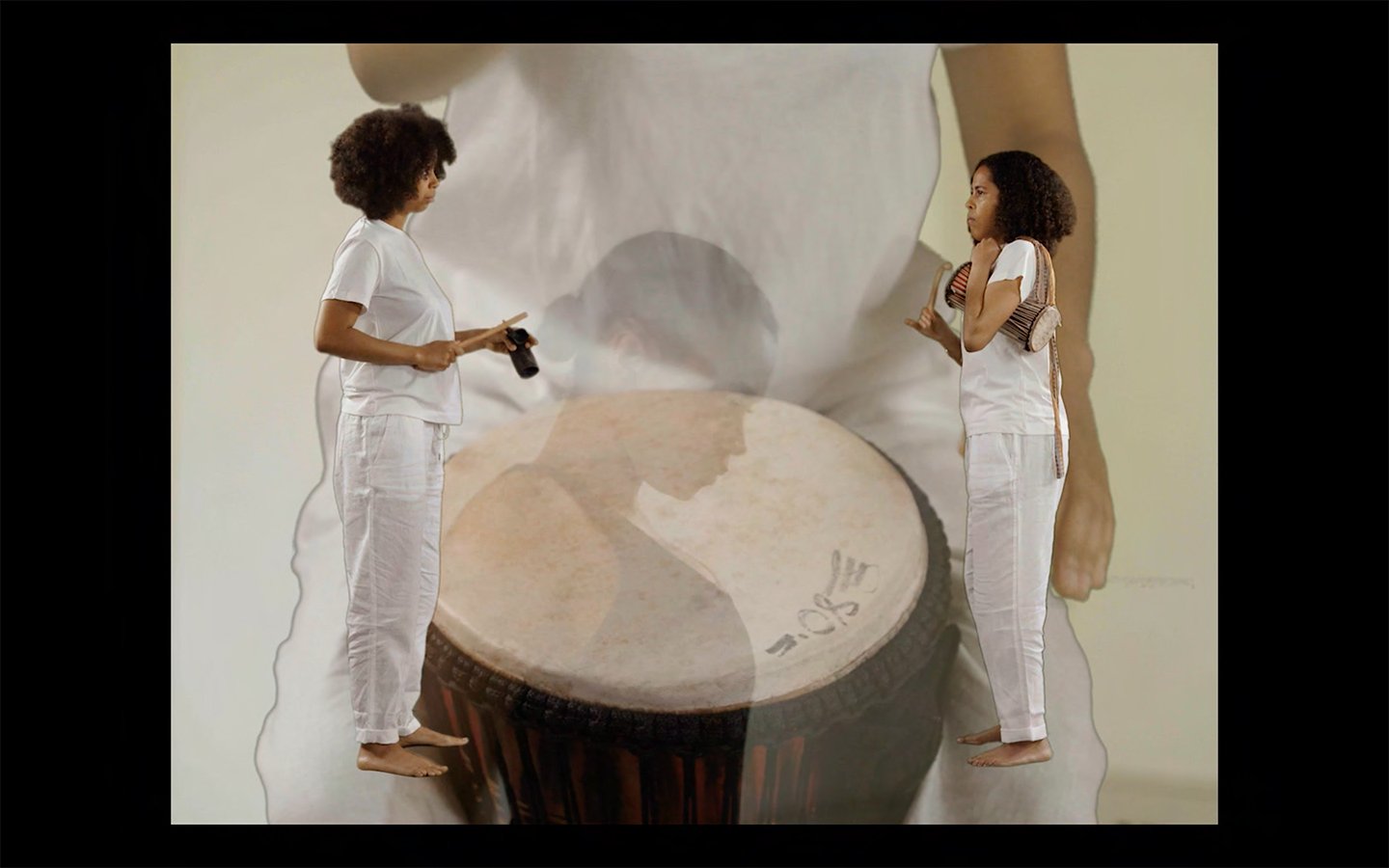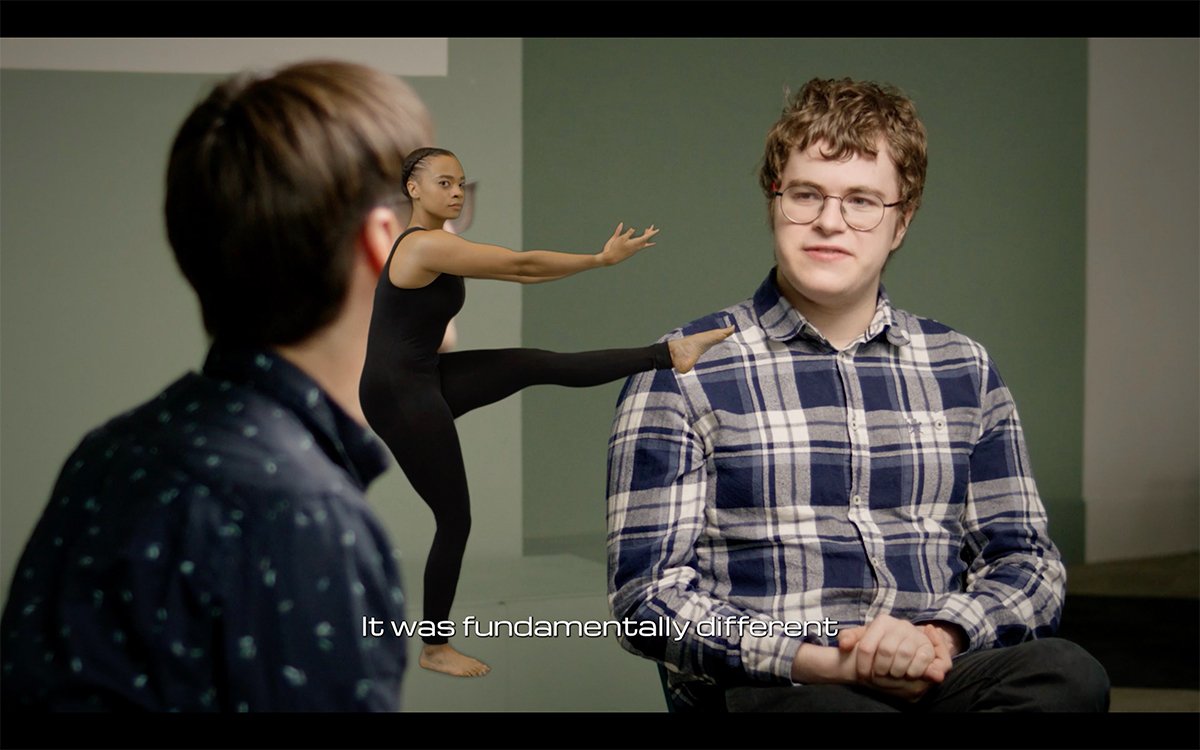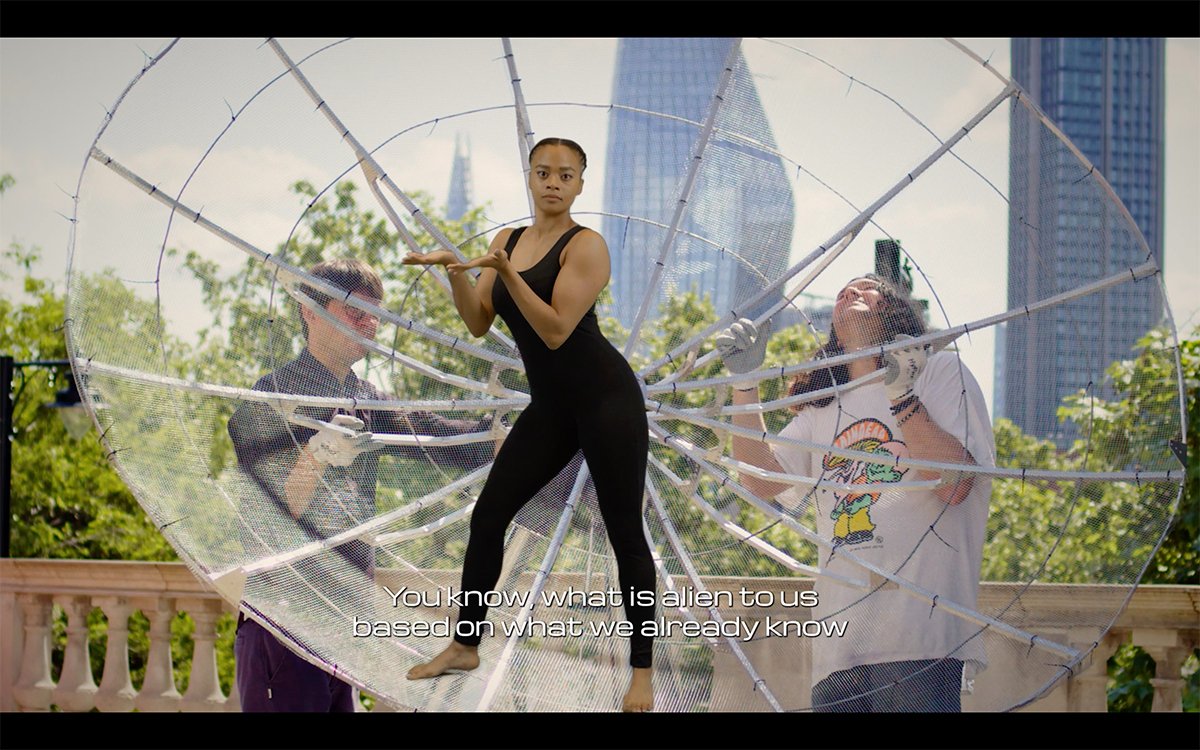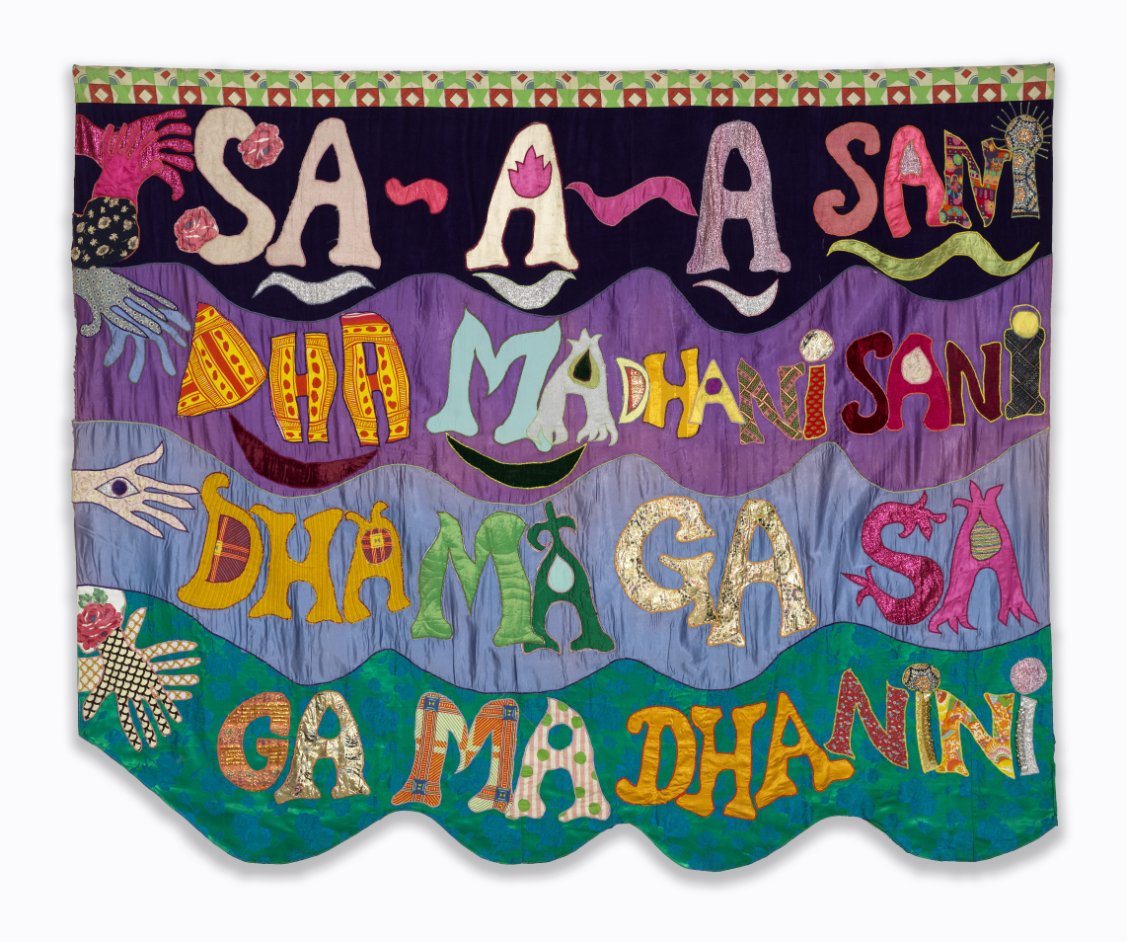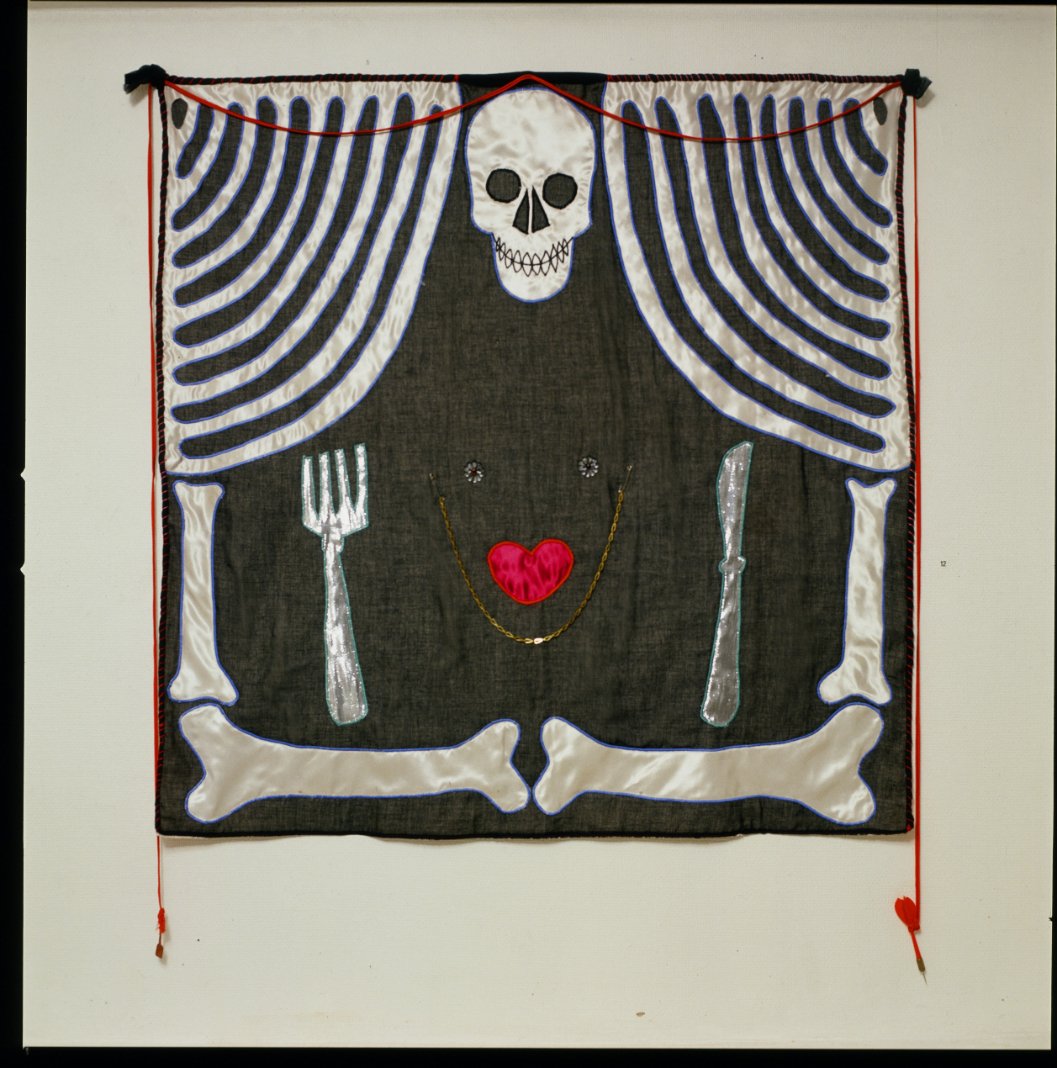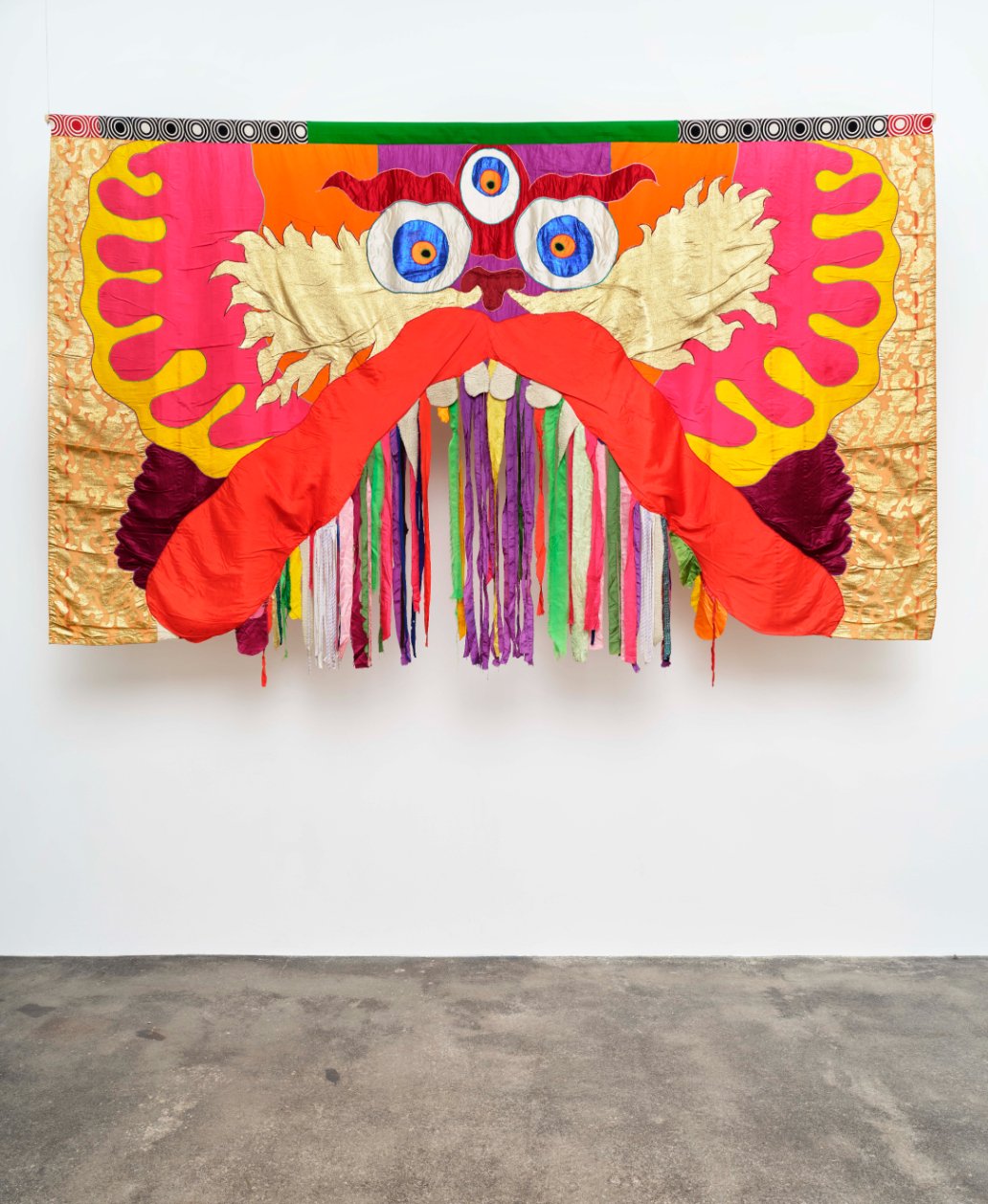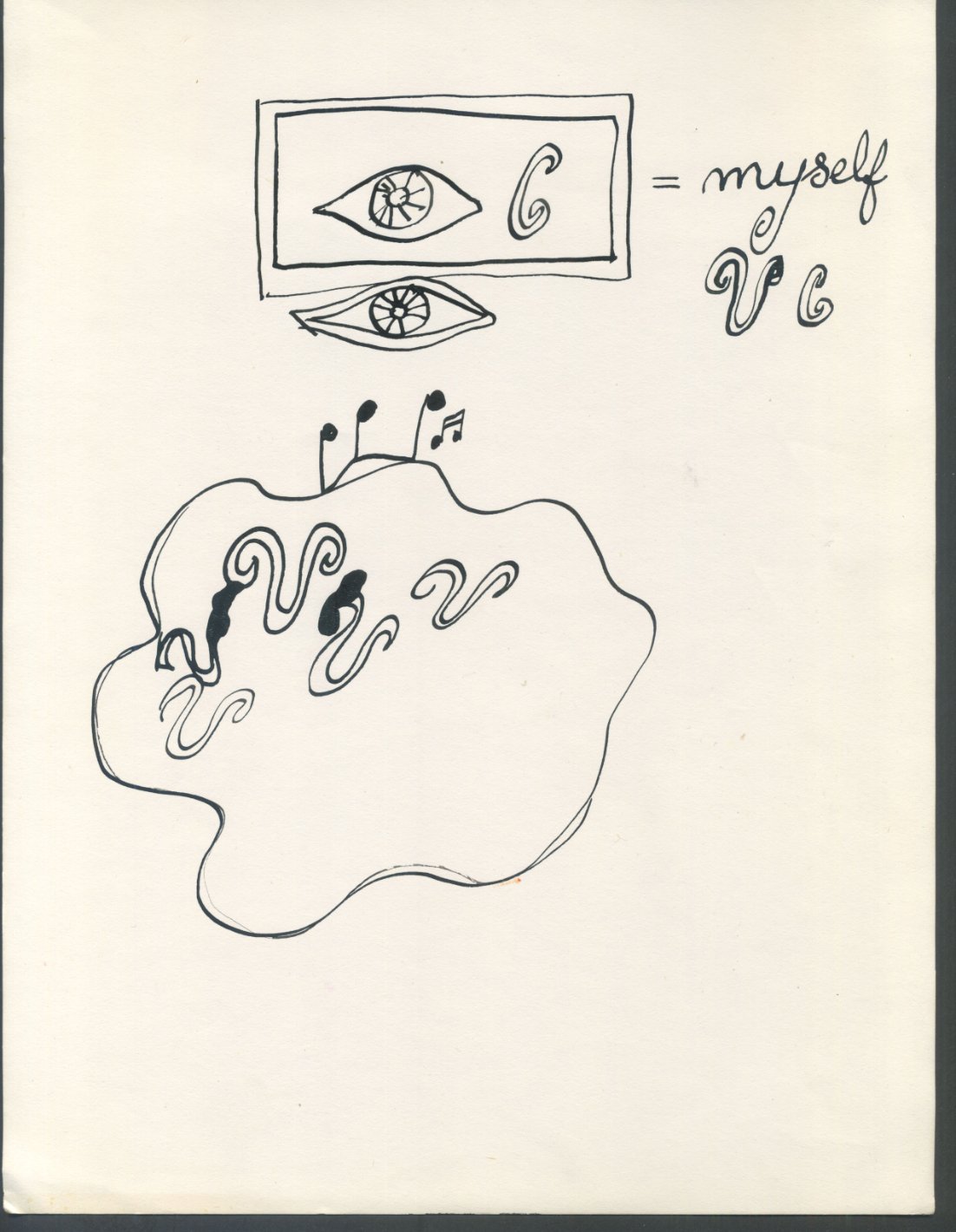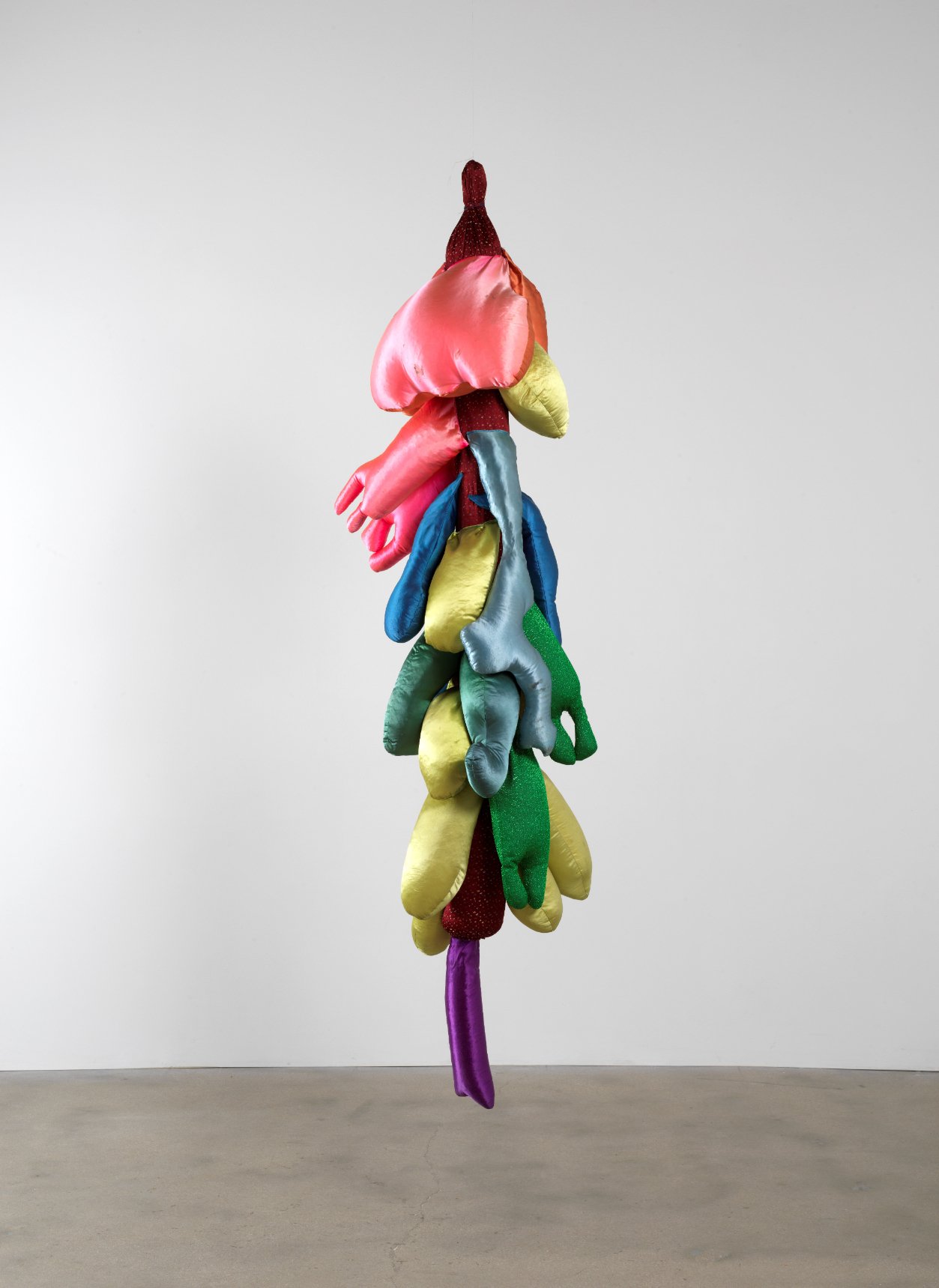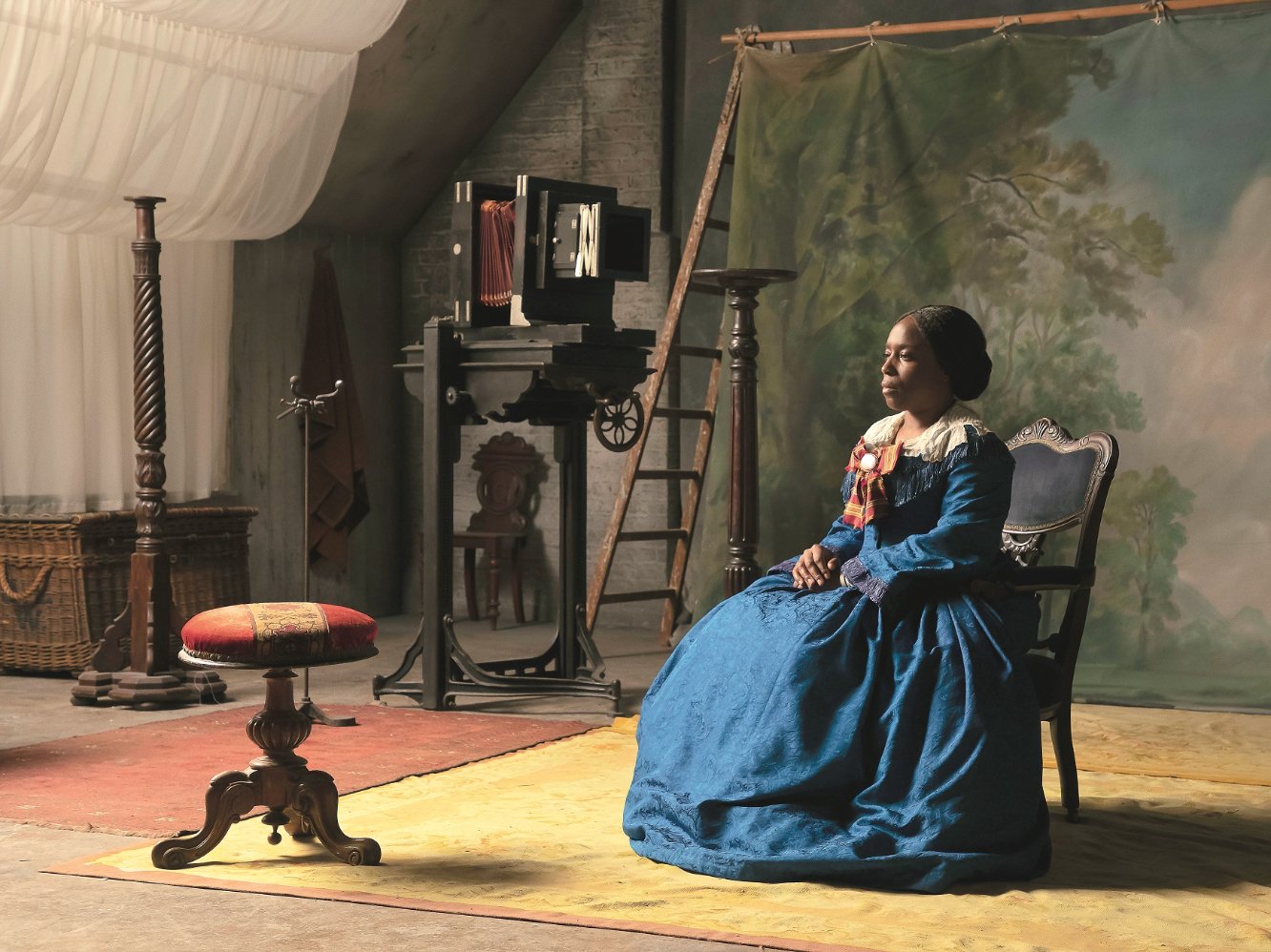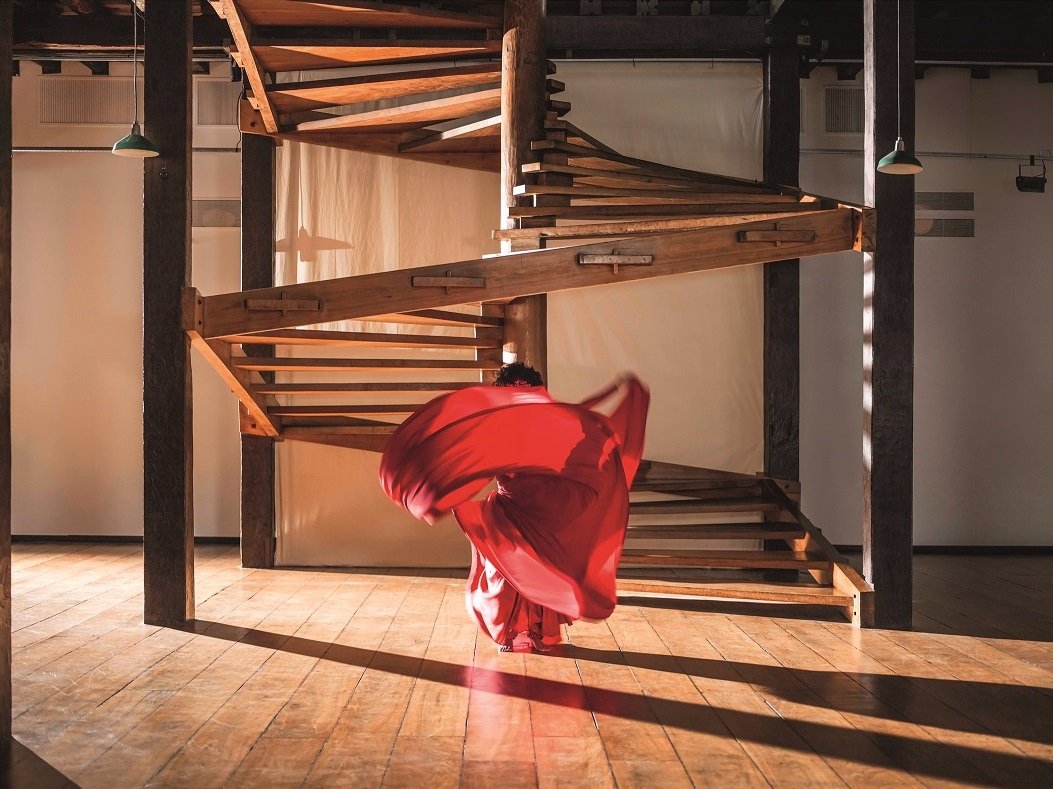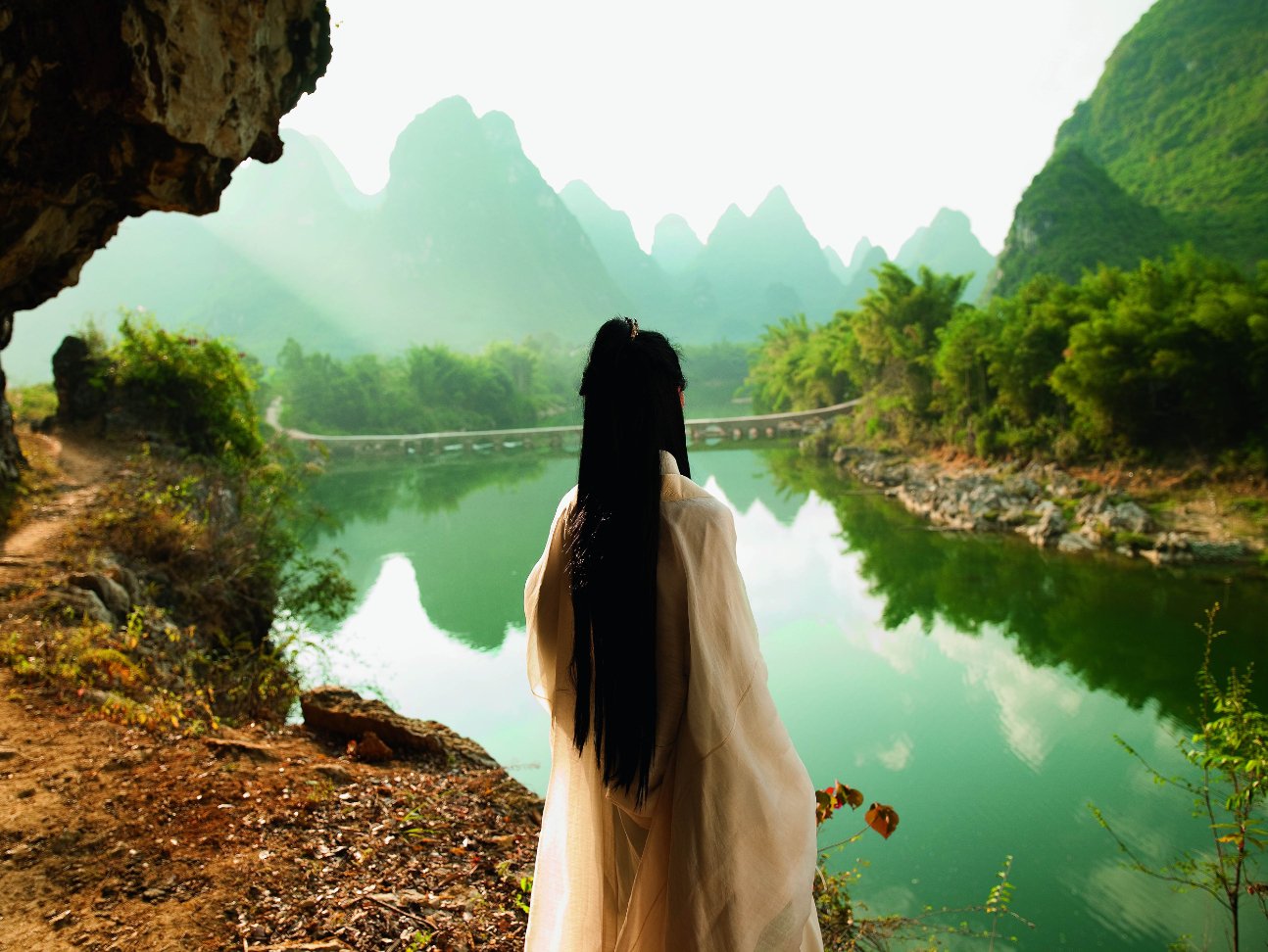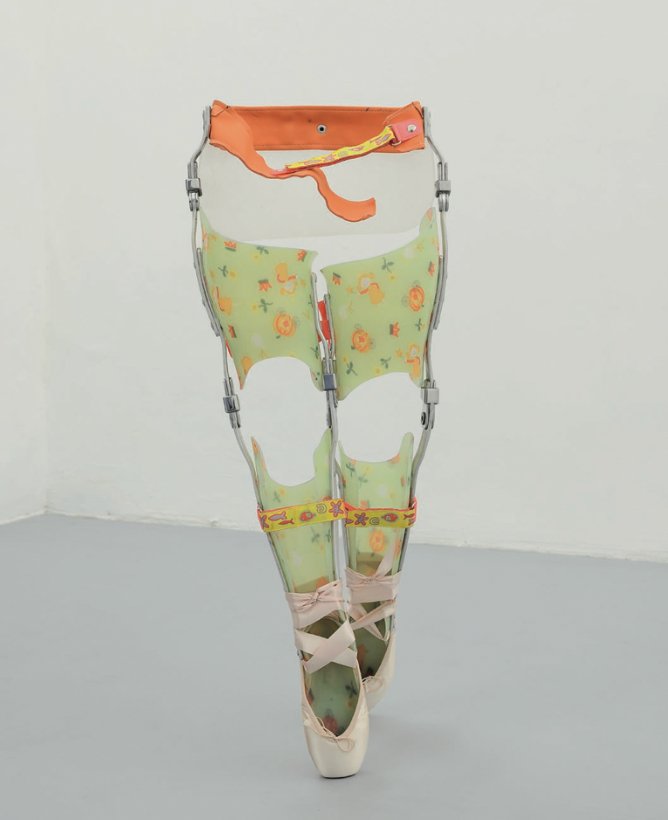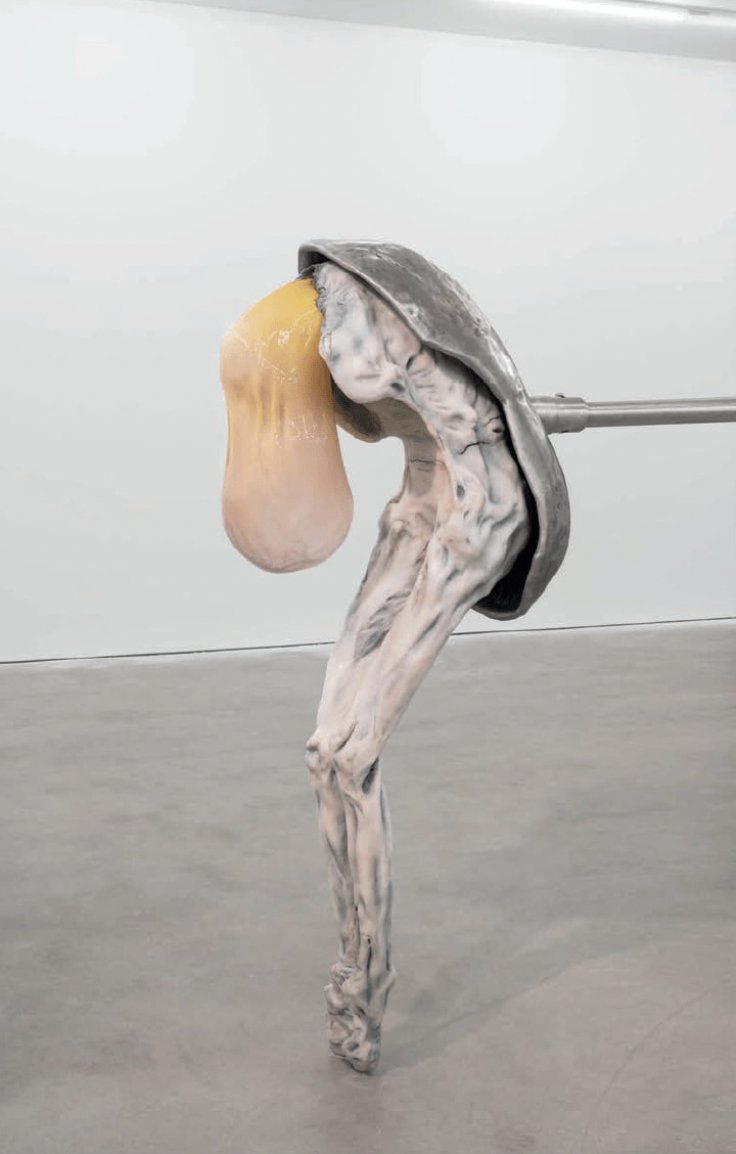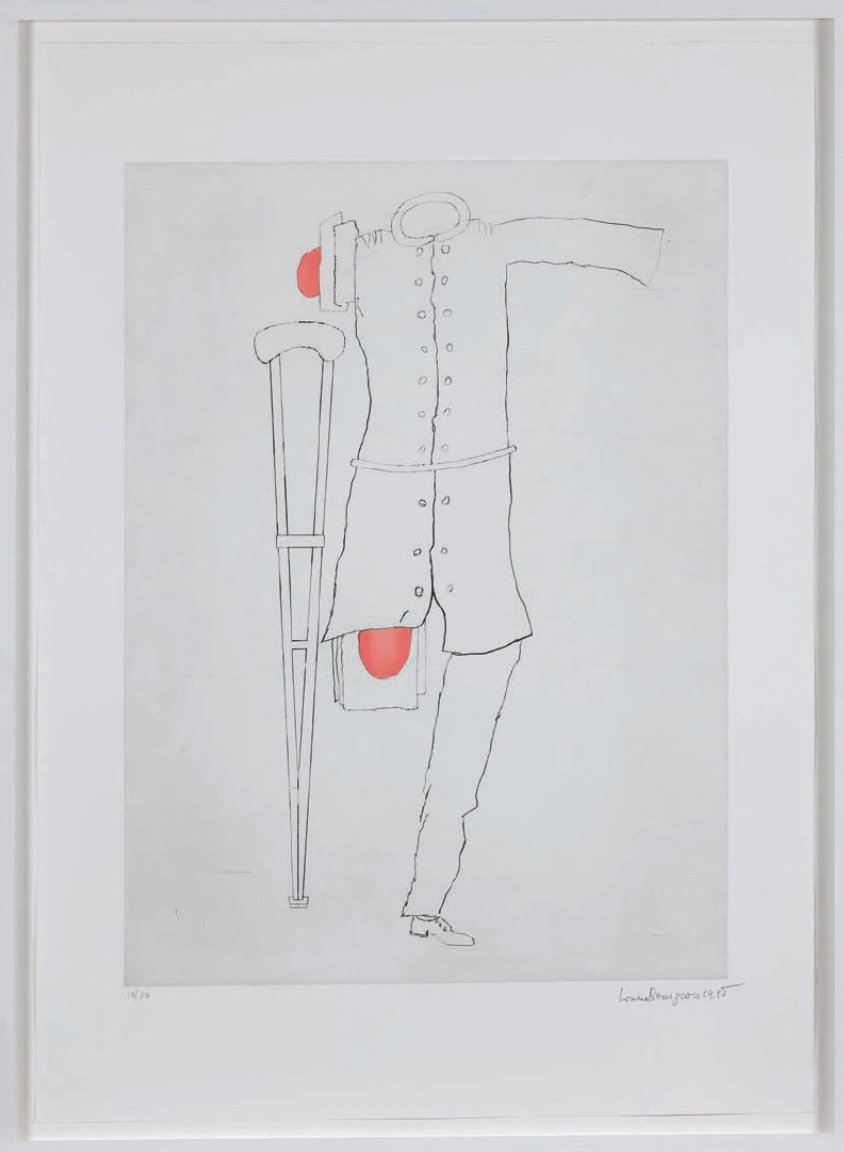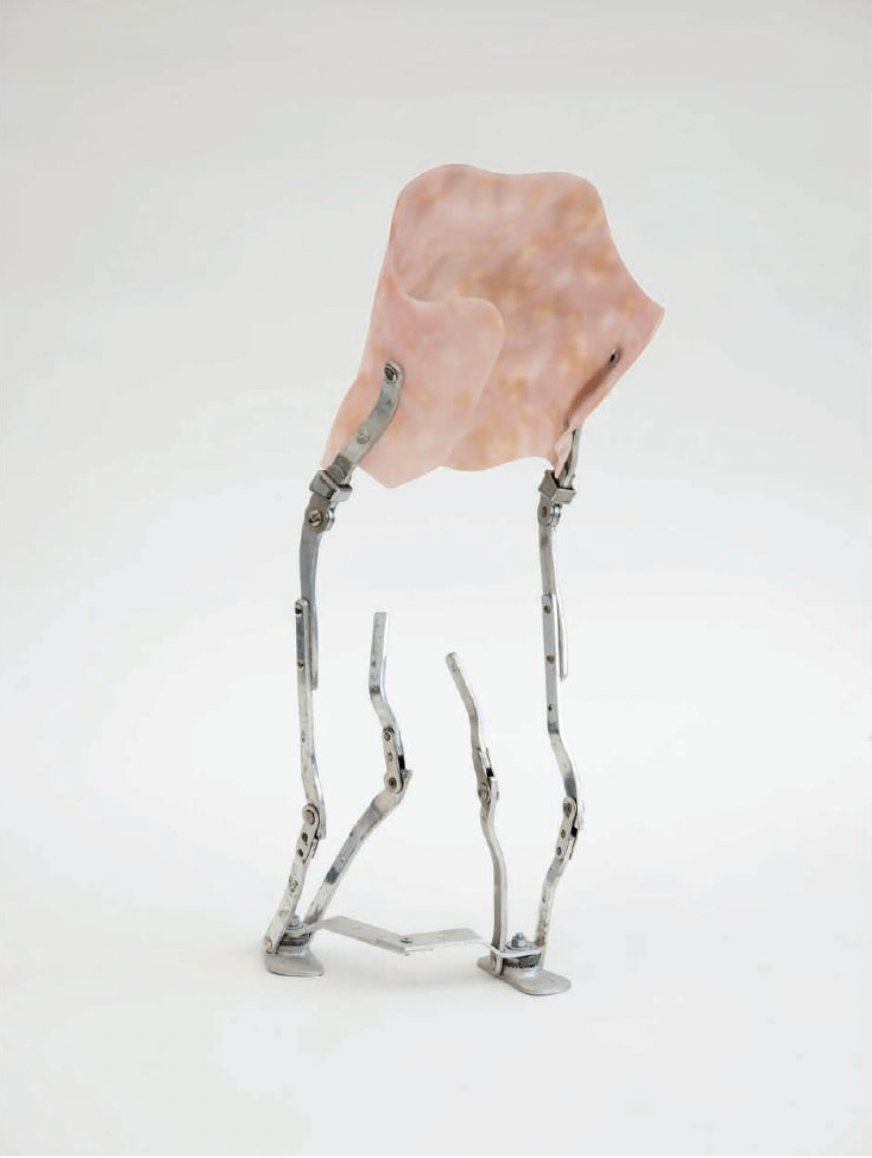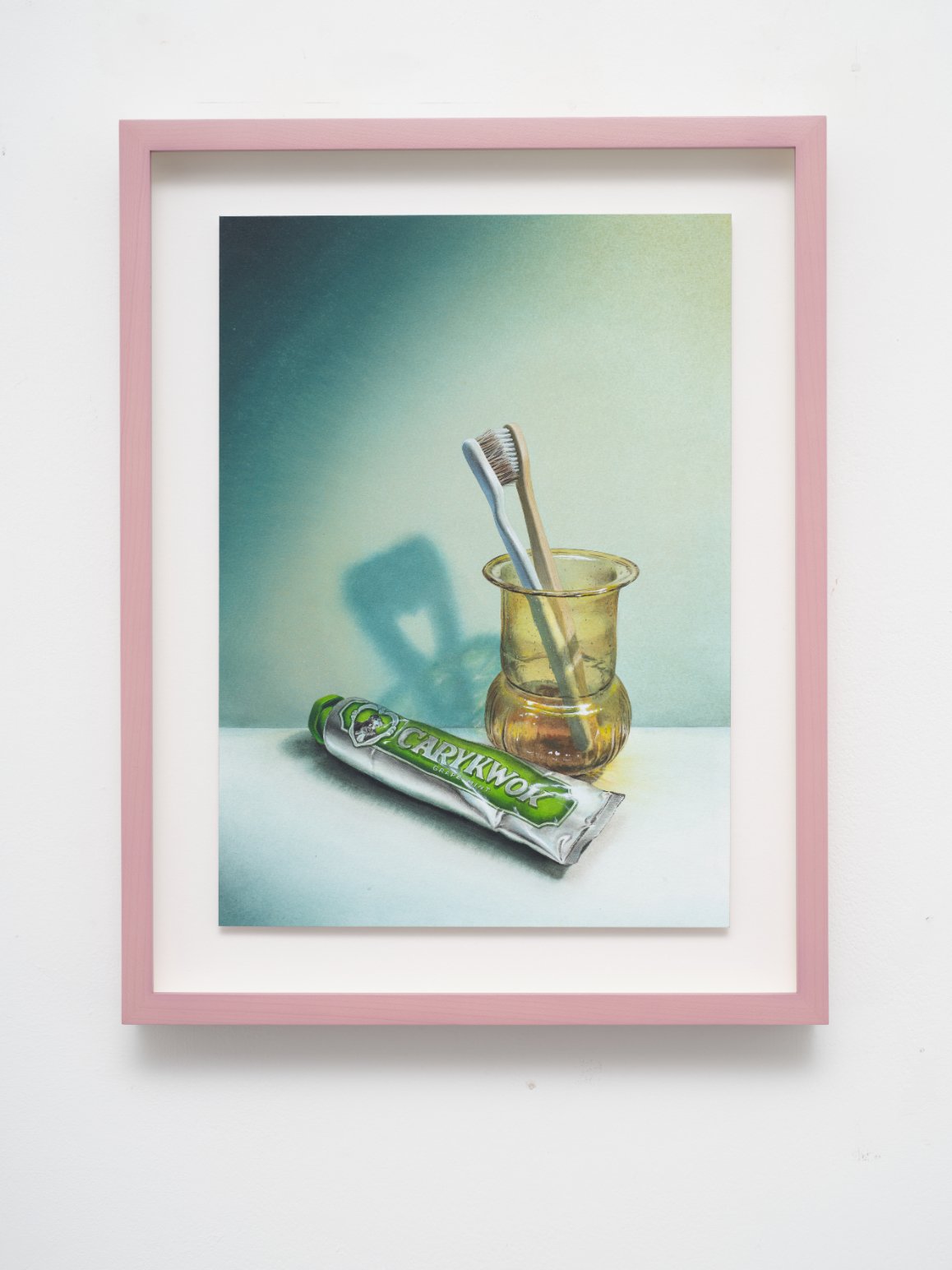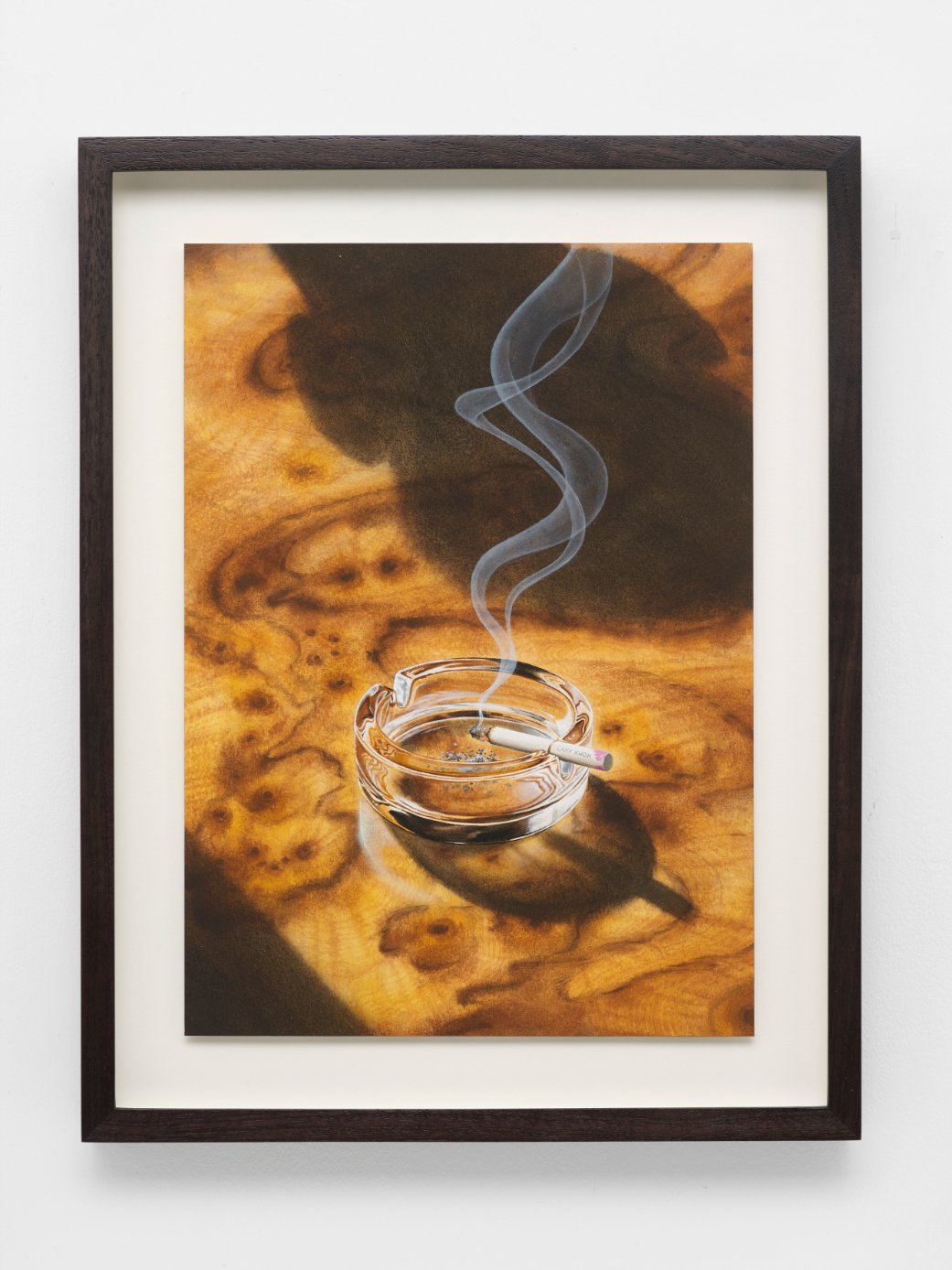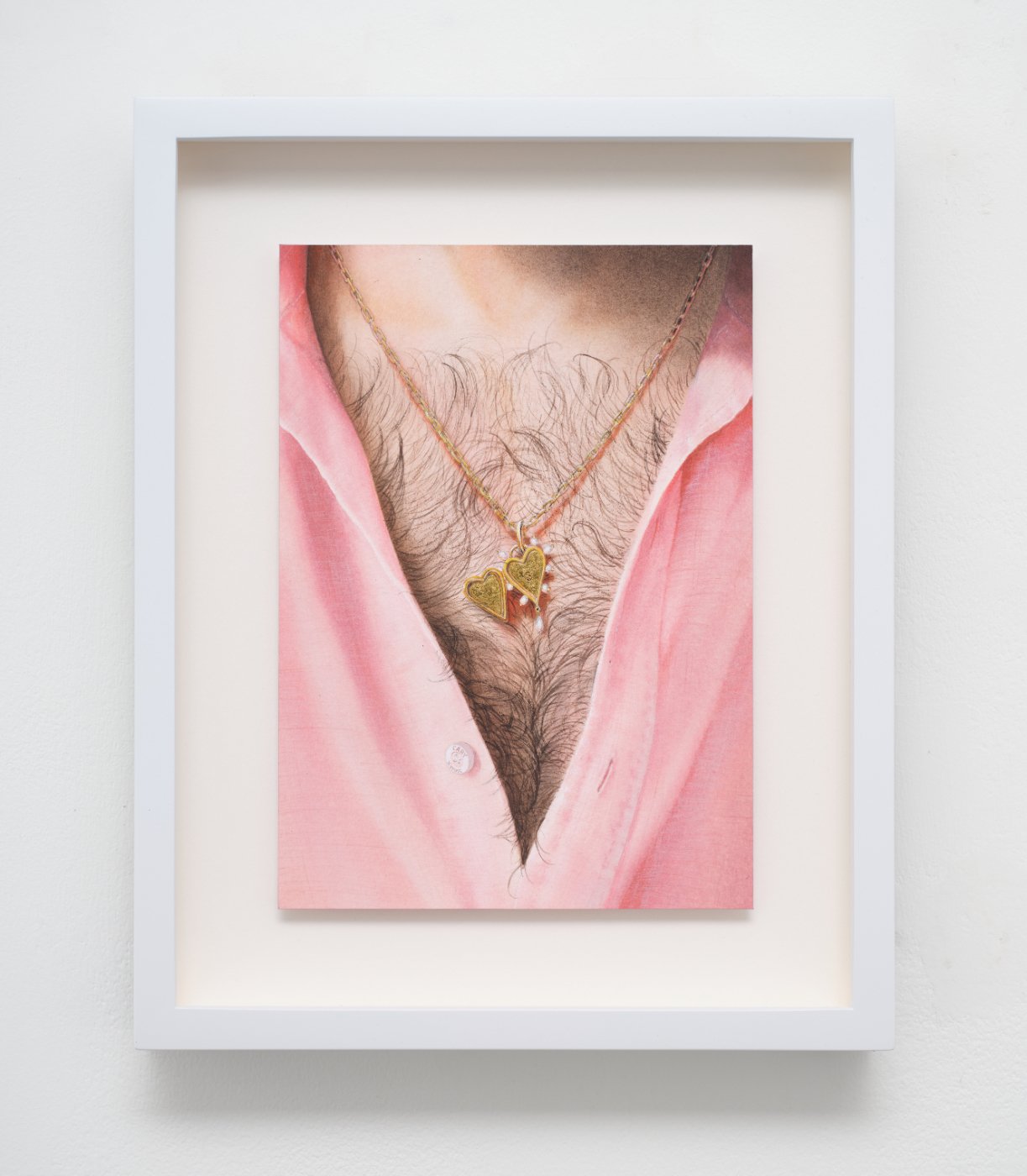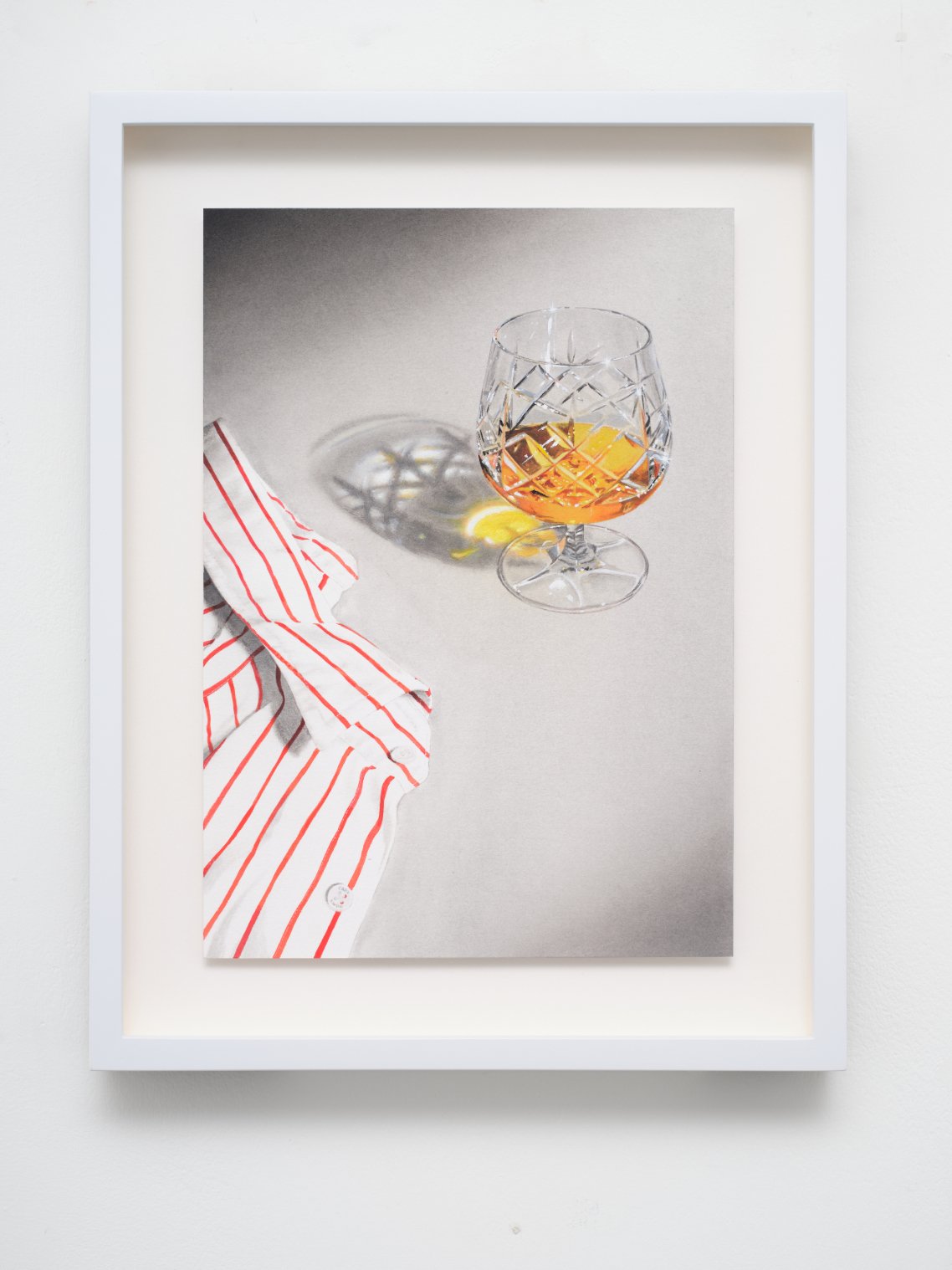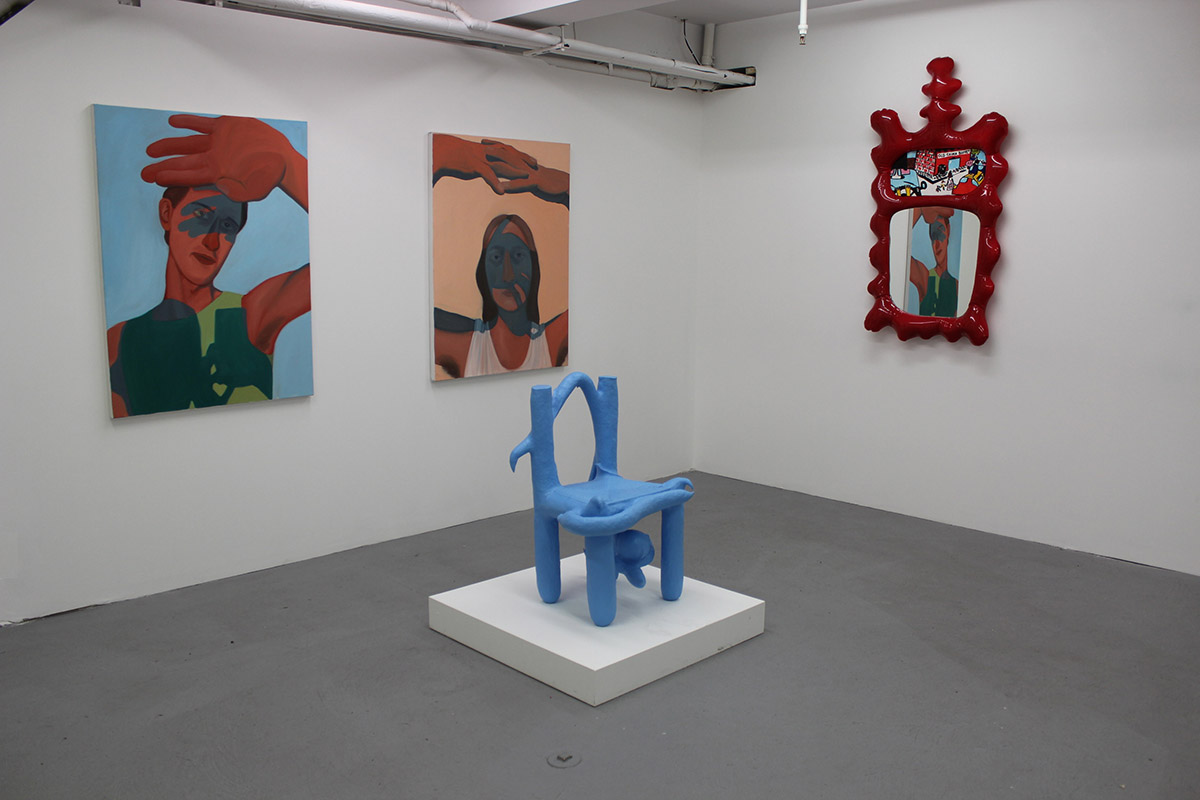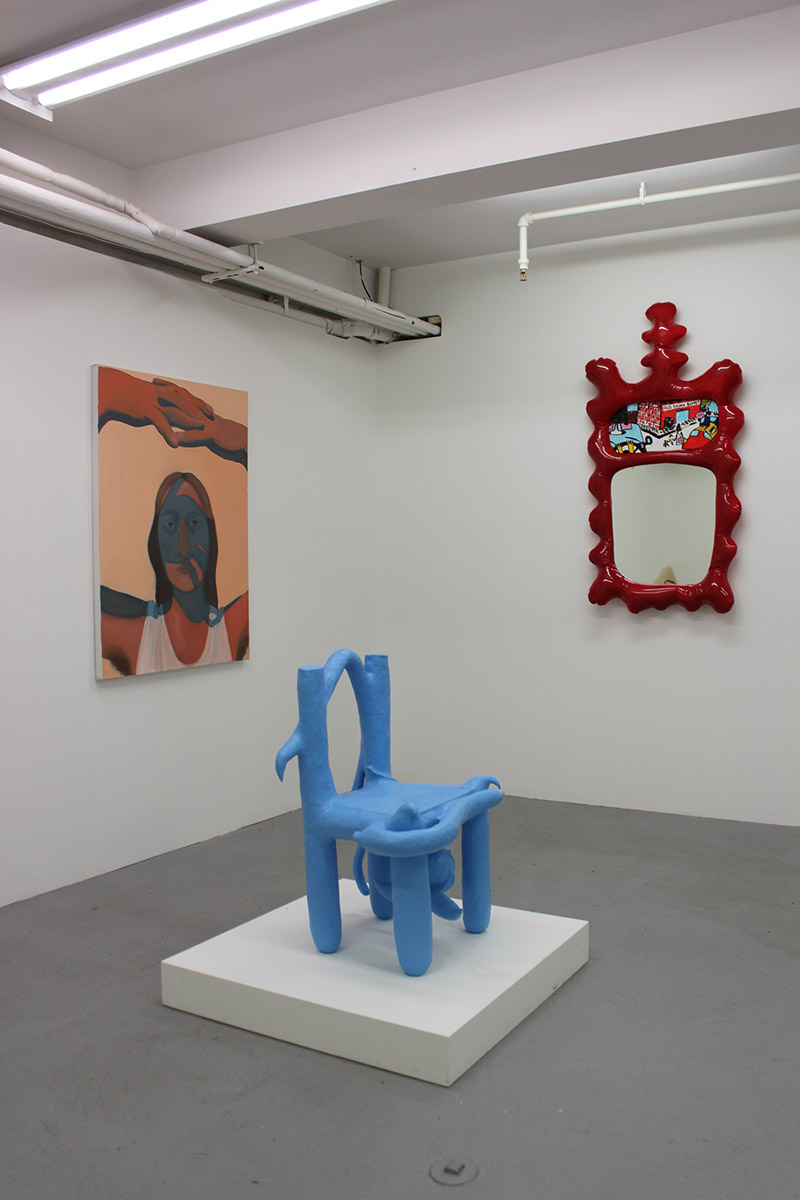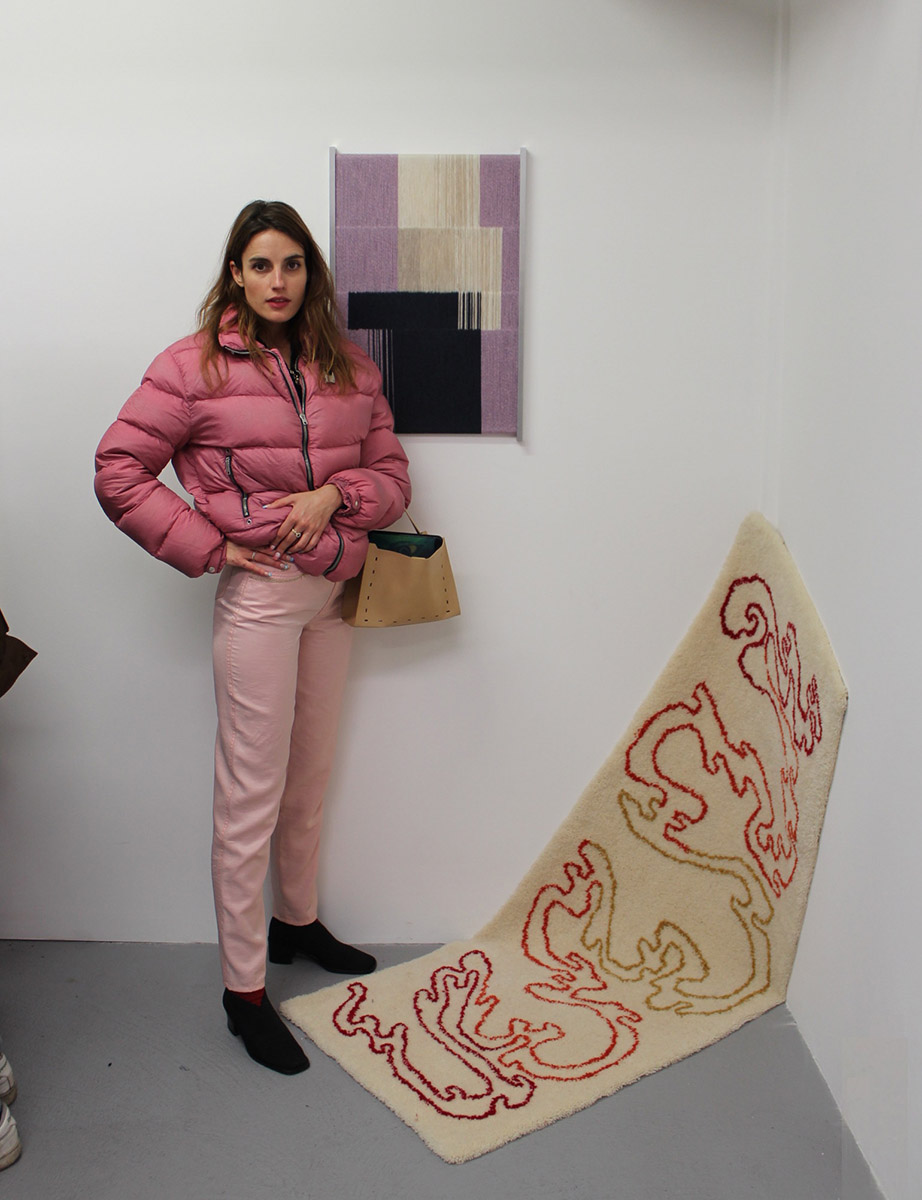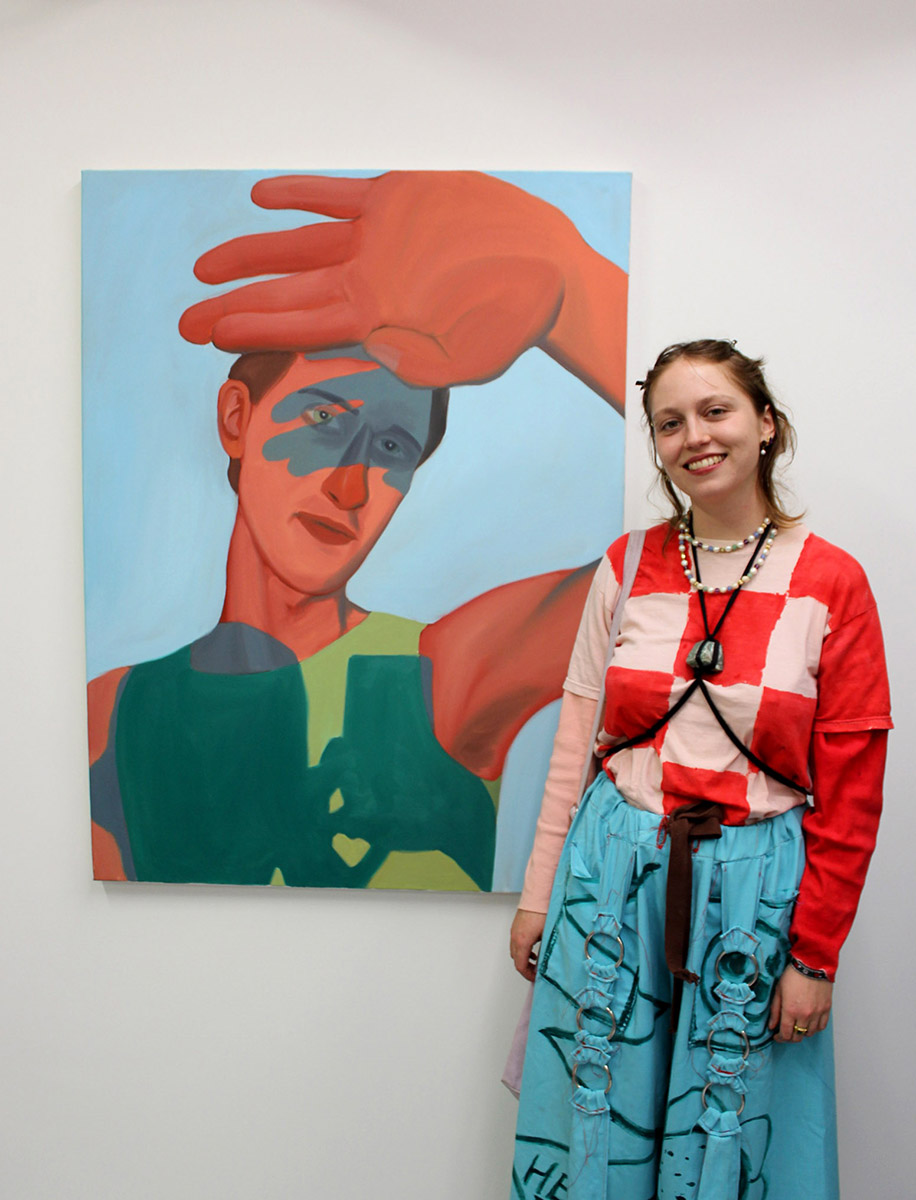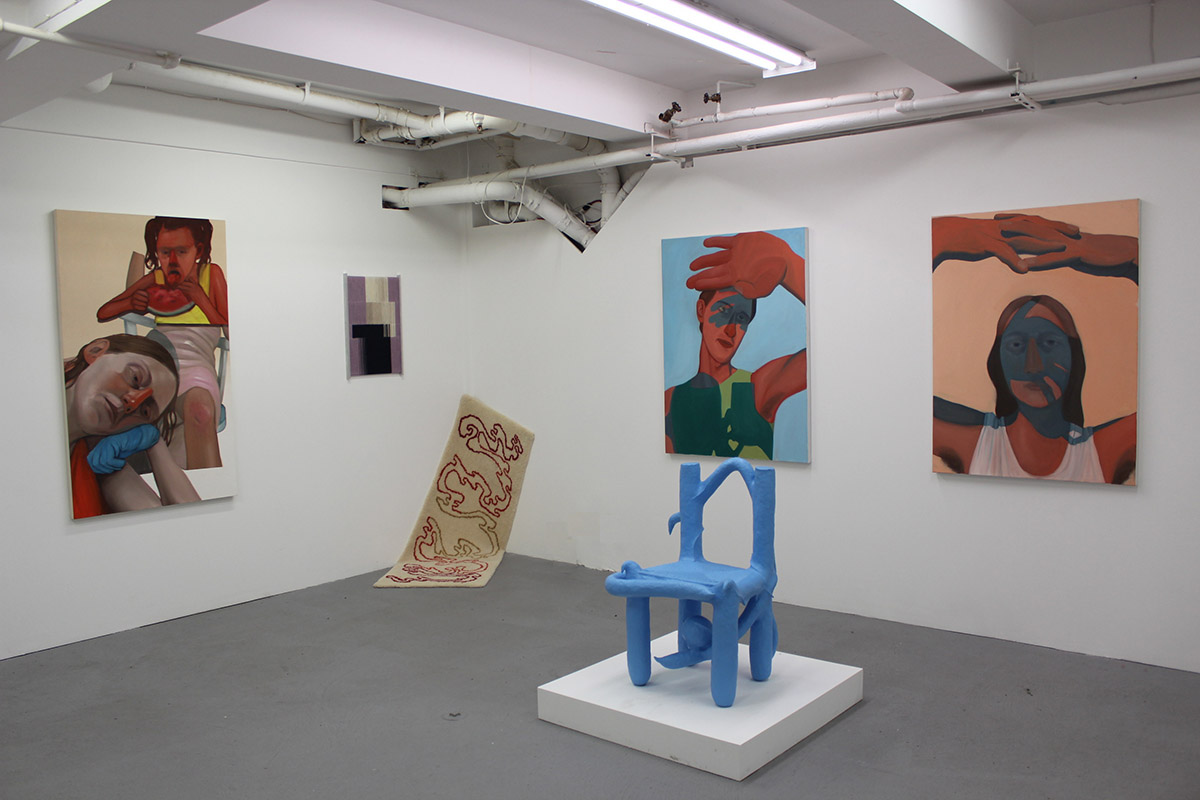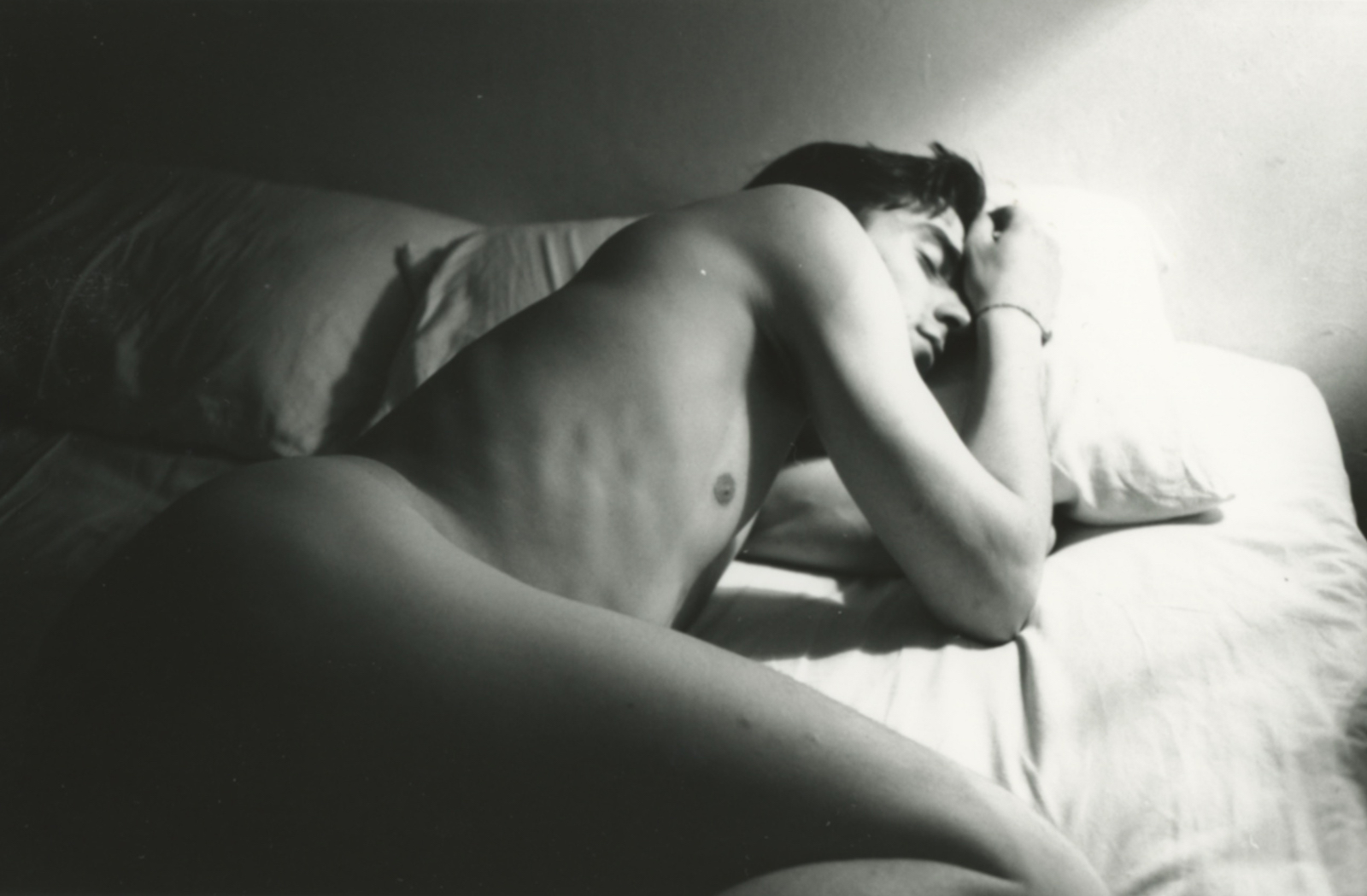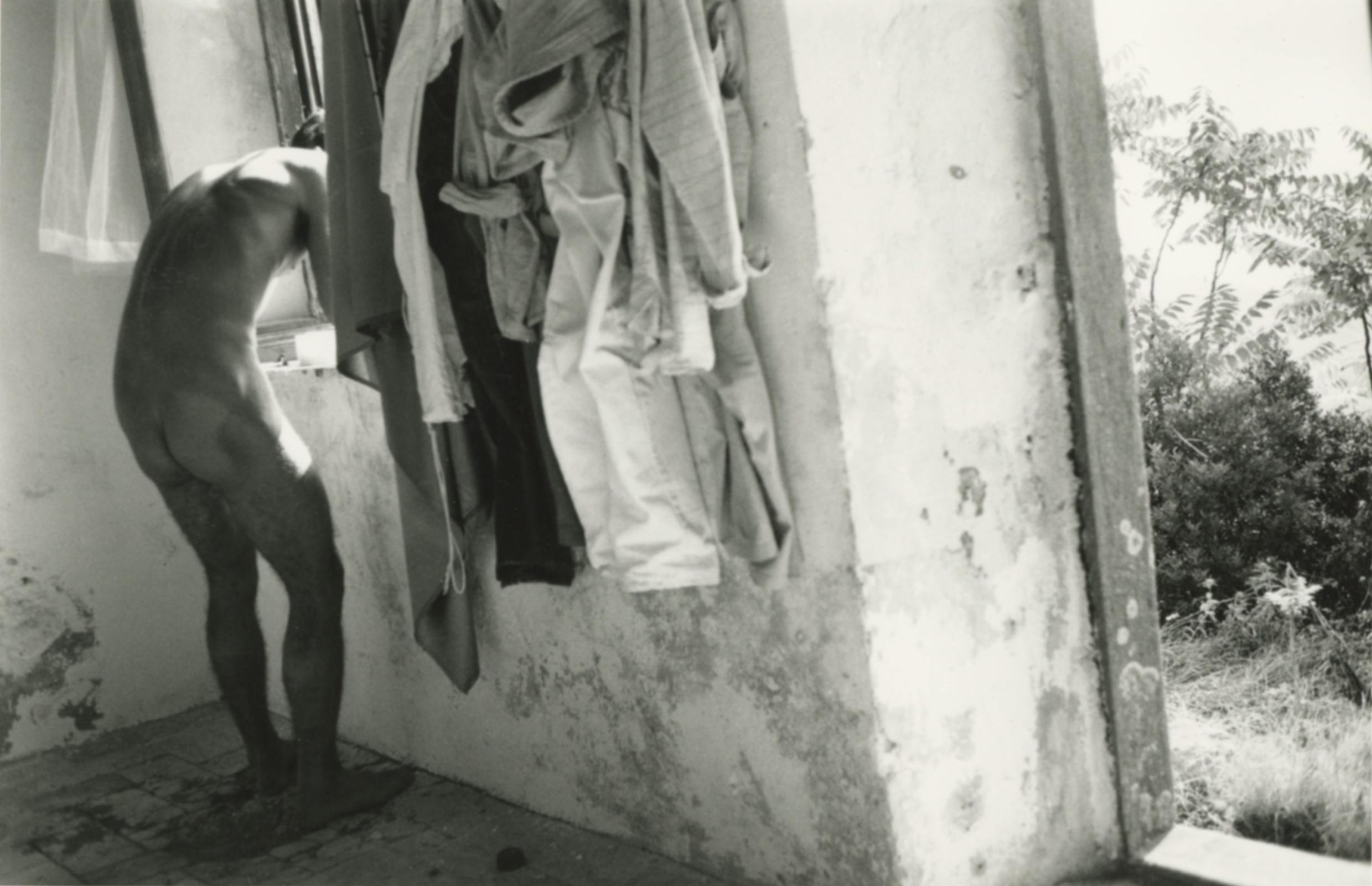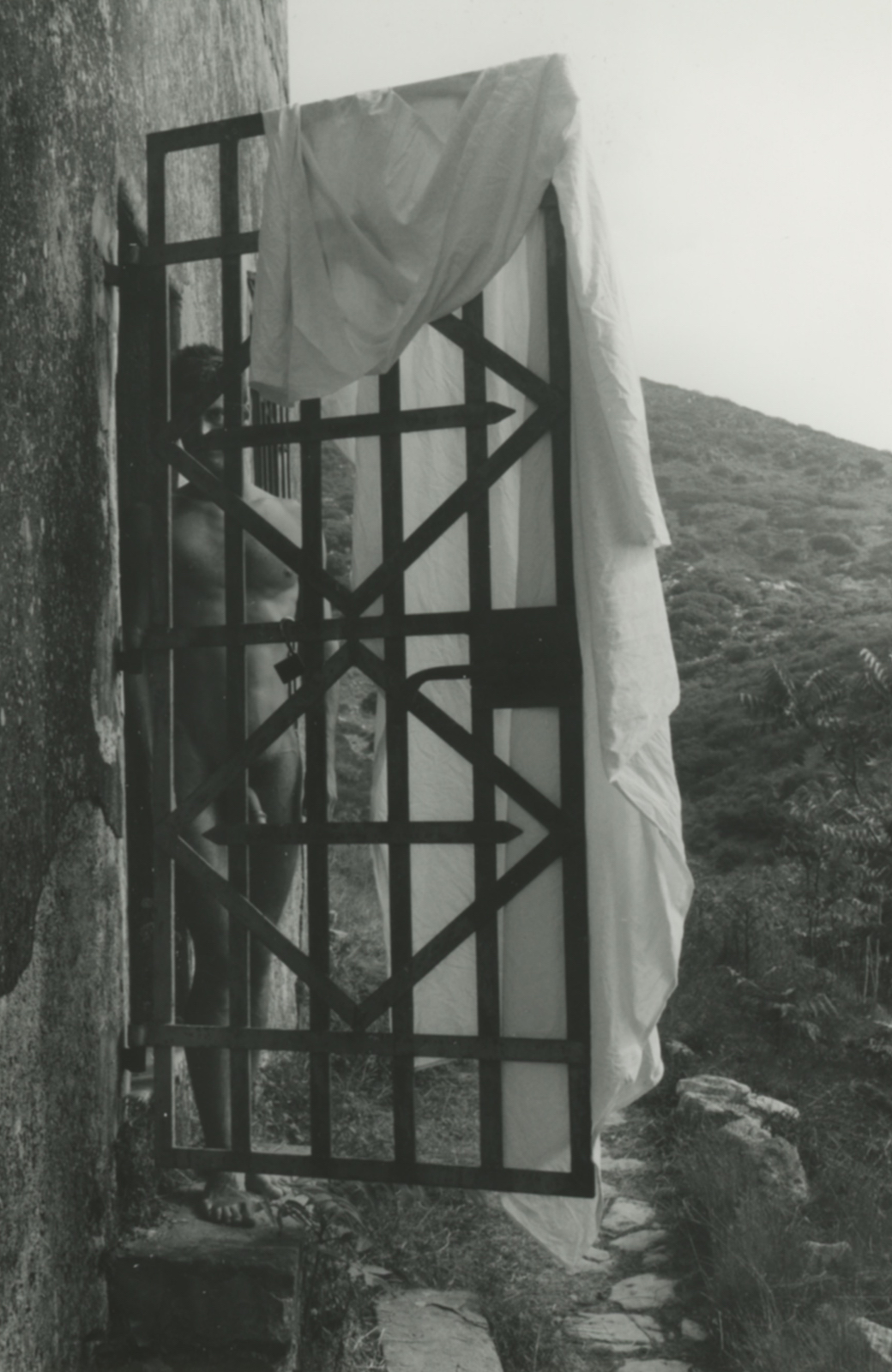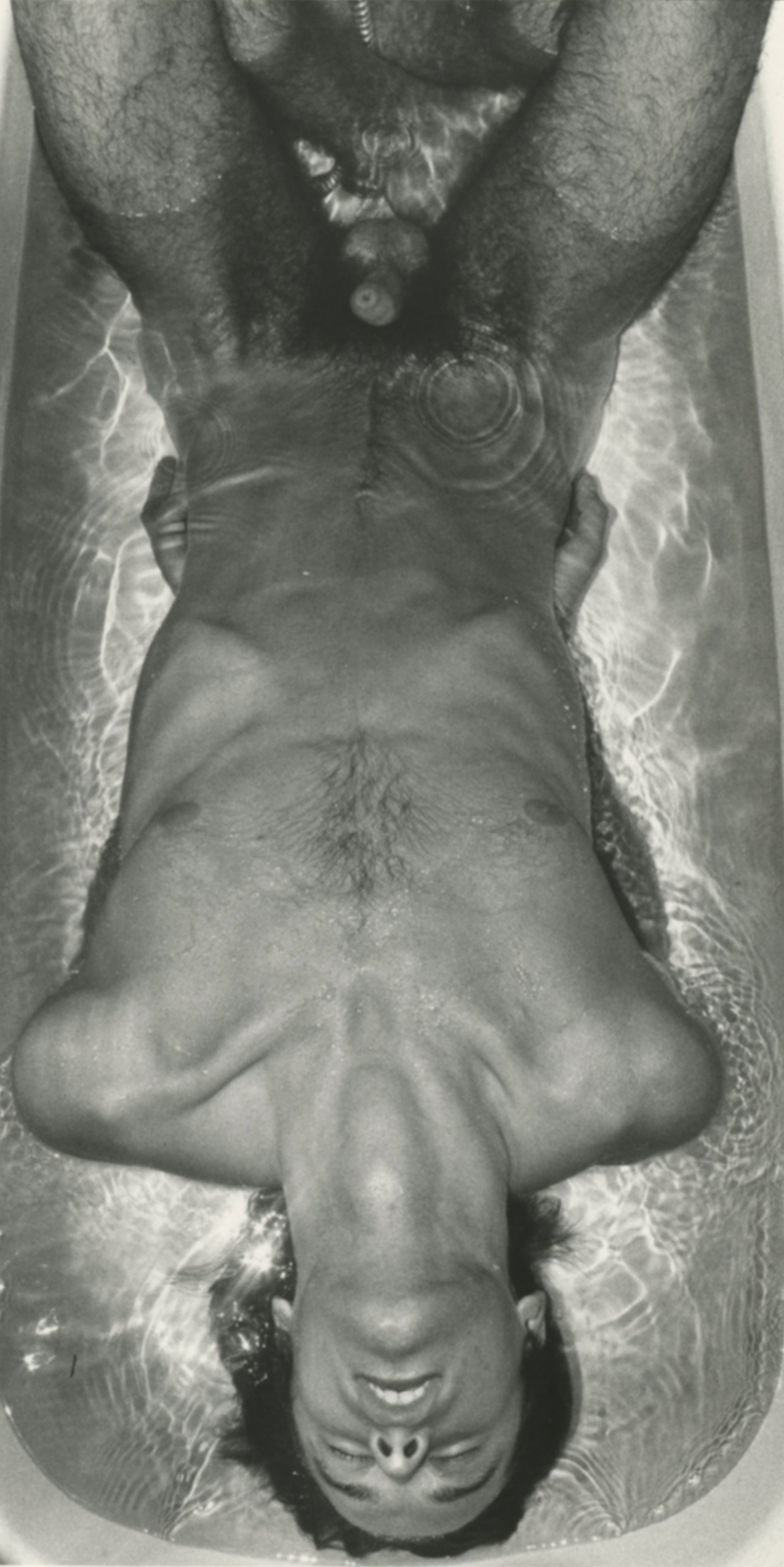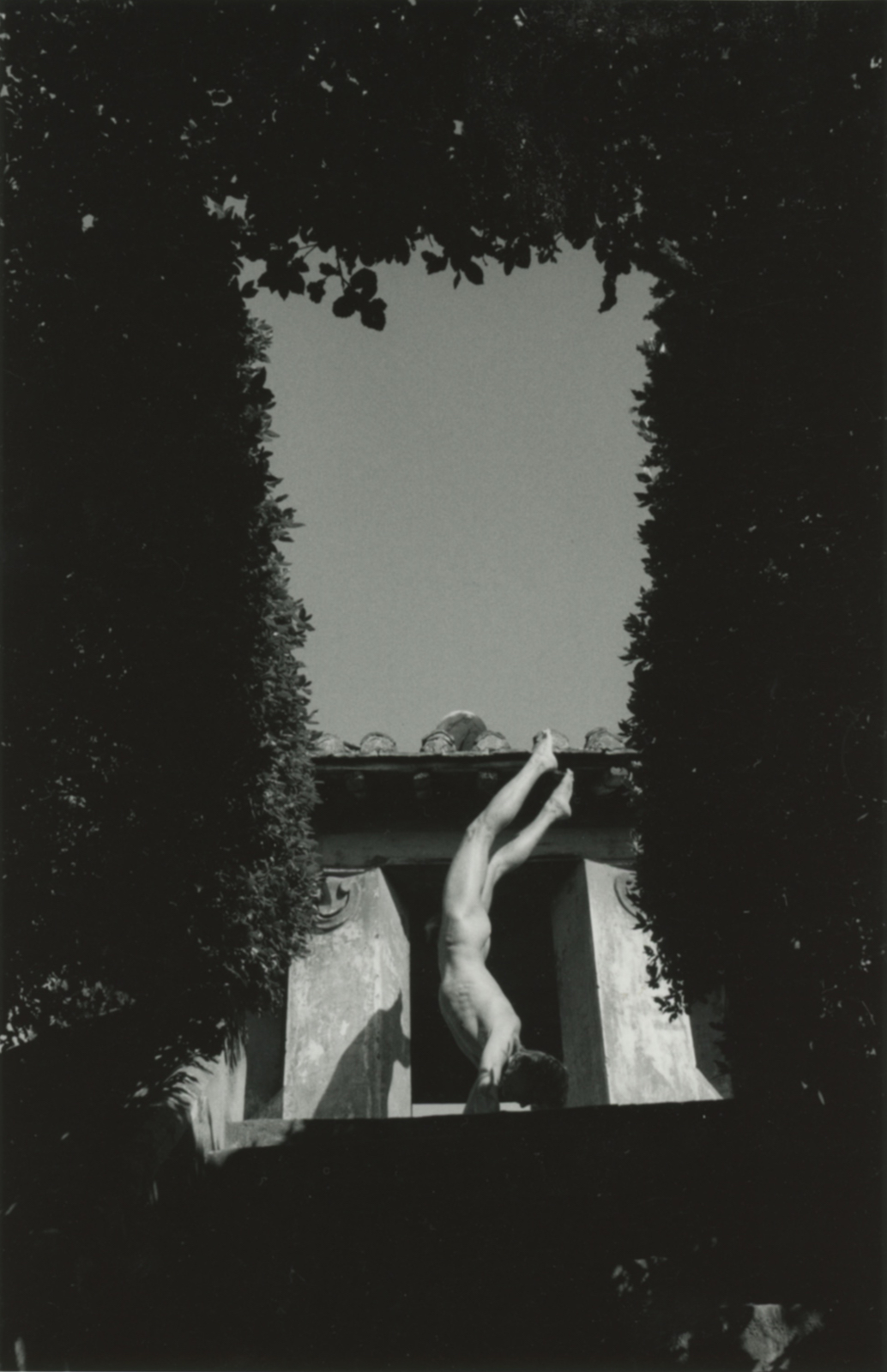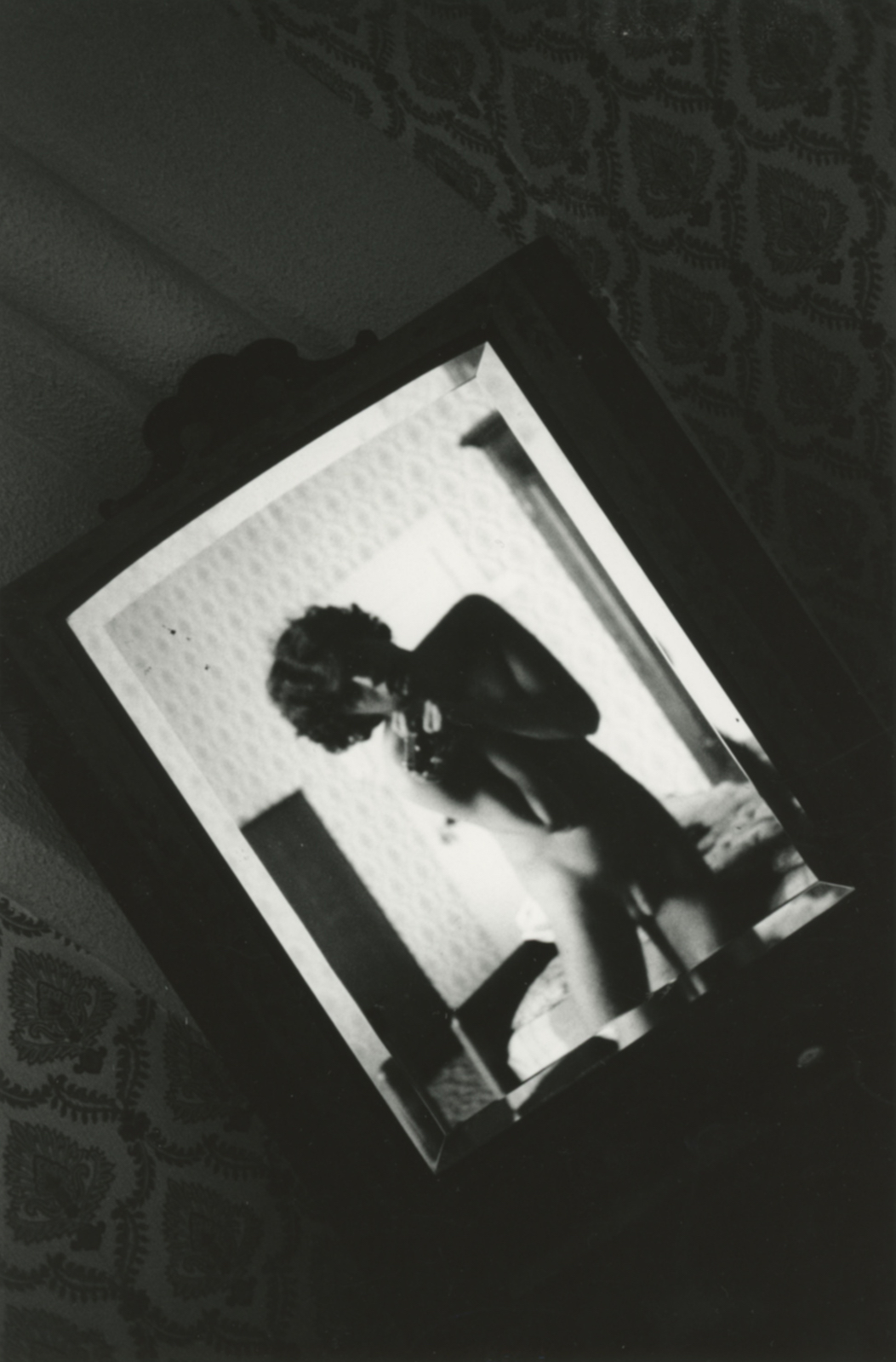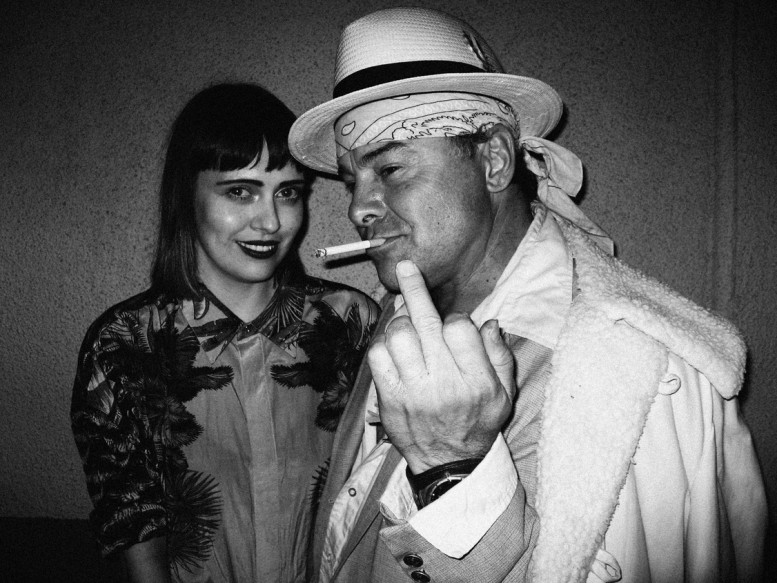Magnificent Production by Vaginal Davis, MoMA PS1, 2025. Photo: Isabella Bernabeo.
text and photographs by Isabella Bernabeo
Magnificent Product marks Vaginal Davis’s first major US institutional show, presenting art from her early Los Angeles projects to her more recent Berlin-based creations. Organized thematically instead of chronologically, the works take viewers on a journey filled with vivid colors, humor, and emotion.
Magnificent Production by Vaginal Davis, MoMA PS1, 2025. Photo: Isabella Bernabeo.
The exhibition begins in a light mint-green room titled Naked on my Ozgod: Fausthaus – Anal Deep Throat. This square room features green sheer curtains along every wall, with hundreds of photos from Davis’s early Los Angeles years covering the walls behind the fabric. Visitors are invited to slowly peel away the fabric from the wall to get an intimate view into Davis’s personal life before seducing them into the next room. This section is inspired by one of her first art exhibitions, originally held at the Pio Pico Library in Los Angeles.
In the next space, HAG, Davis reconstructs her old Sunset Boulevard apartment in Los Angeles, the site where she produced many iconic zines, such as Shrimp, Yes, Ms. Davis, and Sucker. The dimly lit room glows pink and includes a walk-in box in the center. Inside, its walls display drawings and figurines of a woman’s head, possibly self-portraits. The slanted floor creates a warped, unbalanced environment that meshes reality with fantasy, just like the work it supports.
Magnificent Production by Vaginal Davis, MoMA PS1, 2025. Photo: Isabella Bernabeo.
Another engaging room in Davis’s collection is HOFPFISTEREI, where visitors are encouraged to interact with her artwork. A table and four chairs occupy the room’s center, surrounded by piles of Davis’s zines, writings, and creations. A photocopier stands nearby for visitors to print out copies to take home.
Davis also utilizes a screening room, which resembles the Cinerama Dome movie theater that operated on Sunset Boulevard from 1963 until 2021. Here you can watch low-fi videos she created during the 1980s, showcasing her range of personas as an artist, queer activist, self-proclaimed “Blacktress,” and more. These recordings, much like the earlier photos, give visitors a detailed and in-depth view into Davis’s life; they’re a testament to how interconnected her art is with her identity.
Magnificent Production by Vaginal Davis, MoMA PS1, 2025. Photo: Isabella Bernabeo.
Another striking installment is from her Wicked Pavilion collection, displaying a reimagined version of Davis’s teenage bedroom. However, instead of her in the rotating bed, a large phallic sculpture sits in the space. The room is completely pink, from the walls to the rug to the curtains. A miniature desk sits in the right corner, topped with two lamps, a pile of jewelry, and an array of colored nail polish, hinting that Davis’s has relished dressing up as the showstopper she is since her youth.
Along the ceiling, dozens of images are hung from a clothesline. These photos are of Davis’s muses, such as actor Michael Pitt or actress Isabella Rossellini. While visitors take a look around the bedroom, they listen to a mix of the song, “A Love Like Ours,” from the 1944 film Two Girls and a Sailor, interviews that Davis herself conducted for LA Weekly in 1996, and a voice message from Davis’s own secret admirer, creating a fully-immersive experience.
Magnificent Production by Vaginal Davis, MoMA PS1, 2025. Photo: Isabella Bernabeo.
Across all of these works, Davis’s playfulness and defiance shine through. Magnificent Product is a living experience that can be overwhelming at times, yet each room offers a sense of freedom. Davis commands her viewers’ attention—and she intends it that way.
Magnificent Product is on view through March 2 @ MoMA PS1 22-25 Jackson Avenue, Long Island City, Queens






